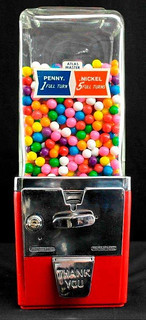
About UsThe Numismatic Bibliomania Society is a non-profit association devoted to the study and enjoyment of numismatic literature. For more information please see our web site at coinbooks.org SubscriptionsThose wishing to become new E-Sylum subscribers (or wishing to Unsubscribe) can go to the following web page link MembershipThere is a membership application available on the web site Membership Application To join, print the application and return it with your check to the address printed on the application. Print/Digital membership is $40 to addresses in the U.S., and $60 elsewhere. A digital-only membership is available for $25. For those without web access, write to: Terry White, Treasurer
AsylumFor Asylum mailing address changes and other membership questions, contact Terry at this email address: terrywhite5475@yahoo.com SubmissionsTo submit items for publication in The E-Sylum, write to the Editor at this address: whomren@gmail.com BUY THE BOOK BEFORE THE COINSale Calendar |
- WAYNE'S WORDS: THE E-SYLUM MARCH 3, 2019
- QUERY: NBS BEST ARTICLE AWARDEES SOUGHT
- RESULTS FROM THE STACKS-BOWERS SULLIVAN SALE
- STACKS SPRING 2019 SULLIVAN LITERATURE SELECTIONS
- NEW BOOK: GUIDE BOOK OF U.S. COINS, 73RD EDITION
- NEW BOOK: 100 GREATEST ANCIENT COINS, 2ND EDITION
- NEW BOOK: NOTGELD ELBE-ELSTER
- JOURNAL OF ISLAMIC NUMISMATIC CENTER - EGYPT
- DOUG WINTER BOOKS AVAILABLE ON NEWMAN PORTAL
- OTAGO MUSEUM TO DIGITIZE ROMAN COIN COLLECTION
- COMMEMORATIVE MANHOLE COVERS
- NOTES FROM E-SYLUM READERS: MARCH 3, 2019
- VOCABULARY TERM: CIRCULAR FORM
- JOEL HERBERT DU BOSE (1860-1934)
- CHICAGO INDUCTS DUNHAM INTO HALL OF FAME
- ROYAL CANADIAN MINT MASTER MARIE LEMAY
- ANCIENT COINS IN APRIL 2019 ROBINSON AUCTION
- STACKS BOWERS SPRING 2019 AMERICANA SELECTIONS
- SELEUCID COINAGE, PART TWO
- 1670 NEW FRANCE 15 SOLS DISCOVERED
- THE COINS OF JOSEF WILD
- ANOTHER 1943 COPPER CENT SURFACES
- THE MASSACHUSETTS MEDAL OF LIBERTY
- JOEL. R. ANDERSON COLLECTION RESULTS
- THE HAITIAN DOLLAR DOESN'T EXIST
- ZIMBABWE INTRODUCES A NEW CURRENCY
- THE RISE OF THE 100 DOLLAR BILL
- LOOSE CHANGE: MARCH 3, 2019
Click here to access the complete archive a
Click here to unsubscribe (scroll down)
To comment or submit articles, reply to whomren@gmail.com
Content presented in The E-Sylum is not necessarily researched or independently fact-checked, and views expressed do not necessarily represent those of the Numismatic Bibliomania Society.
WAYNE'S WORDS: THE E-SYLUM MARCH 3, 2019
 New subscribers this week include: Jonathan Ong of Penang, Malaysia, courtesy of Paul Neumann; Mark Grant, and "Psycho Dave". Welcome
aboard! We now have 5,837 subscribers.
New subscribers this week include: Jonathan Ong of Penang, Malaysia, courtesy of Paul Neumann; Mark Grant, and "Psycho Dave". Welcome
aboard! We now have 5,837 subscribers.
Thank you for reading The E-Sylum. If you enjoy it, please send me the email addresses of friends you think may enjoy it as well and I'll send them a subscription (but let me know if they are located in the European Union). Contact me at whomren@gmail.com anytime regarding your subscription, or questions, comments or suggestions about our content.
This week we open with a question from our historian, the Michael J. Sullivan numismatic literature sales, three new books, two new journals, and an update from the Newman Numismatic Portal.
Other topics this week include William F. Dunham, the new Royal Canadian Mint Master, auction selections, Selucid coinage, the 1670 New France 15 sols, the private gold coins of Josef Wild, the Massachusetts Medal of Liberty, and the Joel Anderson collection of U.S. paper money.
To learn more about Ormsby's Harvest of Counterfeiters, the new 2020 Red Book, German notgeld, Compugrade, Bolen's Pynchon House token, commemorative manhole covers, ghost money and the Flying Cows of the Future, read on. Have a great week, everyone!
Wayne Homren
Editor, The E-Sylum
QUERY: NBS BEST ARTICLE AWARDEES SOUGHT
NBS Historian Joel J. Orosz is seeking to fill gaps in the record of awards bestowed by the NBS for best article in the Society's journal, The Asylum. If you won the best article award for the year indicated, or know who did, please share the author's name, and the title of the winning article, with Joel at joeljorosz@gmail.com.
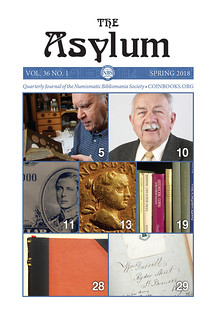 Armand Champa Award for Best Article
Armand Champa Award for Best Article
Best article for 1989 (awarded at 1990 NBS annual meeting)
NBS Writer's Award for Best Article
Best article for 2002 (awarded at 2003 NBS annual meeting)
Best article for 2003 (awarded at 2004 NBS annual meeting)
Best article for 2005 (awarded at 2006 NBS annual meeting)
Best article for 2006 (awarded at 2007 NBS annual meeting)
Best article for 2007 (awarded at 2008 NBS annual meeting)
Best article for 2008 (awarded at 2009 NBS annual meeting)
Can anyone help fill these gaps? -Editor
For more information on NBS Awards, see:
NBS Awards (https://www.coinbooks.org/about/awards.html)

RESULTS FROM THE STACKS-BOWERS SULLIVAN SALE
Last week I incorrectly stated that there were no major numismatic literature sales going on; I overlooked Friday's Stack's Bowers sale which included a large consignment from former NBS President Michael J. Sullivan. We'd discussed the sale earlier in the month. I understand 100% of the books sold at a collectve 95% of the high-end estimate, with significant competition for the extensive run of Heath's Counterfeit Detectors.
Here are the lots we discussed earlier and their prices realized. See the following article in this issue for information on additional Sullivan numismatic literature lots in the upcoming Stack's Bowers Spring 2019 Baltimore internet-only sale. Live Bidding begins tomorrow, March 4, 2019 @ 9:00 AM PST. -Editor
Lot 9233: 1850 Singerly's Autographical Detector
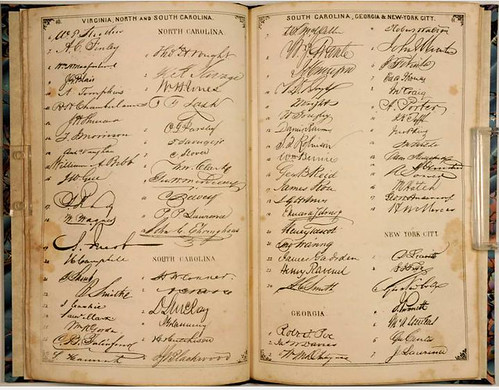
Singerly's Lithographic Chart of Signatures: Being a Supplement to the Western Review, Containing a Fac Simile of the Signatures of the President and Cashier of almost every Bank in the U.S. Pittsburgh: Benj. Singerly, Publisher and Proprietor, Review Building, 1850. 32 pages. 8to. 26.5 x 17 cm. Brown wraps. Now finely bound in quarter blue morocco by Sam Ellenport with blue marbled paper boards. Gilt spine title with raised bands. Contents complete and pages relatively fine and clean. Cover wrap with chipped off lower right corner. Likely, next to impossible to obtain another.
Sale price (Hammer price plus buyer's fee): $1,800 - $300 over the top estimate. -Editor
To read the complete lot description, see:
1850 Singerly's Lithographic Chart of Signatures. Fine Contents and Finely Bound.
(https://auctions.stacksbowers.com/lots/view/3-GRNSK)
Lot 9247: Ormsby's 1862 Harvest of Counterfeiters
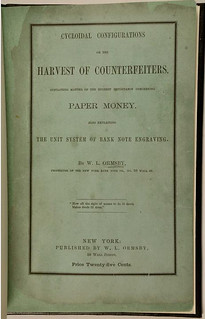 Ormsby, W. L. Cycloidal Configurations or the Harvest of Counterfeiters. Containing Matter of the Highest Importance Concerning Paper Money.
Also Explaining the Unit System of Bank Note Engraving. New York. Published by W.L. Ormsby, 50 Wall Street. Ca. 1862. (3), 45. Front green paper wrap
(rear wrap is missing). Original green front wrap with deterioration, now skillfully mounted upon a paper sheet. Page 26 with three attachments slips as
originally from the Ford Library. Octavo. Now beautifully bound in full black morocco by Sam Ellenport. Gilt cover perimeter bordering, gilt spine title and
raised bands. Marbled interior covers. Gorgeous presentation. One of the extreme rarities of this genre. There are only a few confirmed. This example is ex
Ford and was subsequently sold in Kolbe & Fanning Sale 129, lot 510. At the time, it was only the third auction appearance in 35 years. There was no example in
the Newman Library Part XI sale. The impressive binding amplifies this immensely important rarity. It appears quite infrequently, especially in comparison with
his large opus with engraved plates. That often exceeds $3,000 or more, yet is relatively available. This is a great opportunity.
Ormsby, W. L. Cycloidal Configurations or the Harvest of Counterfeiters. Containing Matter of the Highest Importance Concerning Paper Money.
Also Explaining the Unit System of Bank Note Engraving. New York. Published by W.L. Ormsby, 50 Wall Street. Ca. 1862. (3), 45. Front green paper wrap
(rear wrap is missing). Original green front wrap with deterioration, now skillfully mounted upon a paper sheet. Page 26 with three attachments slips as
originally from the Ford Library. Octavo. Now beautifully bound in full black morocco by Sam Ellenport. Gilt cover perimeter bordering, gilt spine title and
raised bands. Marbled interior covers. Gorgeous presentation. One of the extreme rarities of this genre. There are only a few confirmed. This example is ex
Ford and was subsequently sold in Kolbe & Fanning Sale 129, lot 510. At the time, it was only the third auction appearance in 35 years. There was no example in
the Newman Library Part XI sale. The impressive binding amplifies this immensely important rarity. It appears quite infrequently, especially in comparison with
his large opus with engraved plates. That often exceeds $3,000 or more, yet is relatively available. This is a great opportunity.
Sale price: $4,320. Great price for a very rare and important item. -Editor
To read the complete lot description, see:
1862 Ormsby's Cycloidal Configurations or "The Harvest of Counterfeiters...". Very
Good Contents Finely Bound. (https://auctions.stacksbowers.com/lots/view/3-GRLXU)
Lot 9283: Heath's Microscope
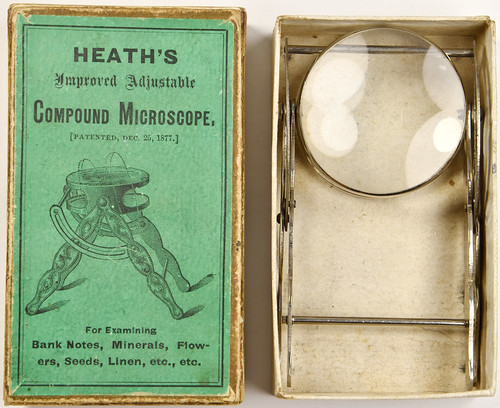
1877 Heath's Compound Microscope with Original Distribution Box. Extremely Fine. Enclosed in Custom Leather Solander Box
Heath, Laban. Heath's Improved Adjustable Compound Microscope, [Patented, Dec. 25, 1877], For Examining Bank Notes, Minerals, Flowers, Seeds, Linen, etc., etc. Folding stand with legs decorated with scrollwork, glass magnifying lens which tilts, stored in the original distribution cardboard box, with pictorial green cover label, as issued. The microscope when folded open is 12.5 x 5.5 cm wide at the base and 6 cm in height. The lens has a diameter of 4.5 cm. Box label with titles, illustration of folded out microscope, and patent date. The microscope and its box are housed in a three quarter brown leather solander box with raised bands, spine compartments lettered in gilt, designed as version "A" as designed and executed by Sam Ellenport.
Sale price: $6,600! - over twice the top estimate. -Editor
To read the complete lot description, see:
1877 Heath's Compound Microscope with Original Distribution Box. Extremely Fine. Enclosed in
Custom Leather Solander Box (https://auctions.stacksbowers.com/lots/view/3-GROK8)
Lot 9287: 1866 Naramore Photographic Detectors in Original Box
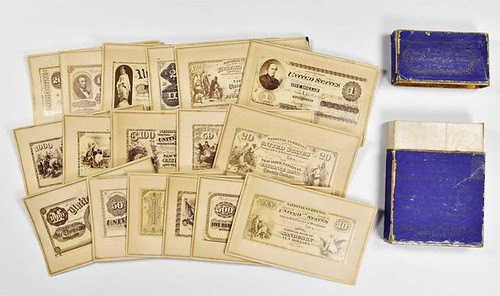
Naramore, R[obert] C. Naramore's United States Treasury and National Bank Note Detector. Pocket Edition. Being Exact Copies of the Genuine Plates, Photographed from the Proof Sheets, By Permission of Hon. H. McCulloch, Secretary U.S. Treasury. Published by American Photograph Co., Bridgeport, Conn. [1866]. 18 individual 10 cm. x 6.3 cm photographic cards, housed in original two piece, blue Cardboard Box with gold lettering. Nearly all of the cards in this set are choice condition. However, a few have some minor mounting remnants at the top of the backs. A full set in original box is rarely seen. Original cardboard box expertly repaired by Alan Grace, 12/1995. Now housed in a sumptuous, octavo size navy half leather solander box, marbled boards, five raised bands, leather spine label, spine compartments decorated in gilt, and blind tooling by Alan Grace. Beautifully made with snug compartment for the original box and the cards it contains. Ex: Charles Davis Sale 23, December 14, 1991, lot 456.
Sale price: $660. One of the great bargains of the sale. -Editor
To read the complete lot description, see:
1866 Naramore's Photographic Detector Set in Original Box. Fine. Enclosed in Finely Crafted
Clamp Shell Box (https://auctions.stacksbowers.com/lots/view/3-GROL8)
Here are some additional results. -Editor
Lot 9242: 1850 Henry Foote Manuscript
 1850 H. C. Foote's Manuscript Concerning Bank Note Rules. Fine. Enclosed in Leather Clamp Shell Box.
1850 H. C. Foote's Manuscript Concerning Bank Note Rules. Fine. Enclosed in Leather Clamp Shell Box.
Titles and Specifications: Foote, H(enry) C. Four page manuscript letter, May 1, [18] /50 to Mr. J. C. Hutchins. Ink manuscript on blue paper, folded. 20 x 30 cm pages. Lengthy discourse concerning notes from the Strafford Bank, [Dover], New Hampshire printed by New England Bank Note Co. and using Perkins Steel Stereotype Plates. The false notes investigated are compared to Foote's seven "rules" as eventually specified in his published works. We believe this letter may precede the publications, hence its importance as a foundational document of Foote's eventual and important publications. Fine, normal folds. Enclosed now in beautifully made blue morocco clamp shell box with cloth sides. Gilt title and raised bands. Priceless, with important content related to Perkin's technology and Foote's work.
Sale price: $2,040 -Editor
To read the complete lot description, see:
1850 H. C. Foote's Manuscript Concerning Bank Note Rules. Fine. Enclosed in Leather Clamp
Shell Box. (https://auctions.stacksbowers.com/lots/view/3-GRLV3)
Lot 9245: 1861 Peyton's How to Detect Counterfeit Bank Notes
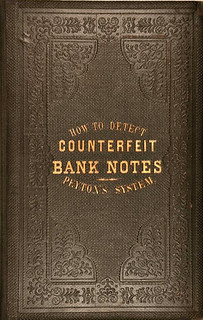 1861 Peyton's How to Detect Counterfeit Bank Notes in Decorated Cloth. Very Fine.
1861 Peyton's How to Detect Counterfeit Bank Notes in Decorated Cloth. Very Fine.
Titles and Specifications: Peyton, George. How to Detect Counterfeit Bank Notes; or, an Illustrated Treatise on the Detection of Counterfeit, Altered, and Spurious Bank Notes, with original bank note plates, engraved expressly for this work by Rawdon, Wright, Hatch, and Edson, bank note engravers of New York. [3rd Edition]: Sixth Thousand. New York: Published for the Author, 1861. 54 pages, 4 finely engraved plates. Hardbound in Black Decorated Cloth, titled on cover and spine in gilt, Full gilt page edges. Octavo.15.0 x 23.5 cm. Very rare edition; one other known to us in this form. This example ex Champa (August, 1990). Ex: John Bergman. Expertly rebacked and repaired by Alan Grace via A. Champa. Handsome penned signature of E. M. (or H.) Tiffany on the front free endpaper. The contents and plates excellent. A gorgeous book and very underrated.
Sale Price: $900 -Editor
To read the complete lot description, see:
1861 Peyton's How to Detect Counterfeit Bank Notes in Decorated Cloth. Very Fine.
(https://auctions.stacksbowers.com/lots/view/3-GRLX0)
Lot 9264: 1870 Heath's Pocket Detector
 Heath's Pocket Detector - 1870 Edition. Unlisted Newman 3-P-3.8. Fine.
Heath's Pocket Detector - 1870 Edition. Unlisted Newman 3-P-3.8. Fine.
Titles and Specifications: Heath, Laban. Heath's Greatly Improved and Enlarged Infallible Government Counterfeit Detector, At Sight. The Only Infallible Method of Detecting Counterfeit, Spurious, and Altered Bank Notes, Government Bonds, & etc., Applicable to all Banks in the United States and Canadas, as Now in Circulation or that May be Issued, With Genuine Designs from the Original Government Plates. By Authority from the United States Treasury Department, and the American, National, and Continental Bank Note Cos., New York and Boston. Third Edition, Revised and Corrected. Boston, Mass. and Washington, D.C.: Published by Laban Heath & Co., No. 30 Hanover St., Boston, to whom all orders should be addressed, 1870. 40 pages includes 2 pages of magnifying glass illustrations, 13 plates includes a double page fractional currency plate, counterfeit $100 Legal Tender, counterfeit $5 Legal Tender. Blue-green cloth, lettered in gilt, blind stamping, 12 mo.
Sale price: $2,040 -Editor
To read the complete lot description, see:
Heath's Pocket Detector - 1870 Edition. Unlisted Newman 3-P-3.8. Fine.
(https://auctions.stacksbowers.com/lots/view/3-GRMFY)
Lot 9280: 1869 American Bond Detector

1869 American Bond Detector Inscribed by Nehemiah G. Ordway. Fine.
Titles and Specifications: American Bond and Currency Detector Company. [aka Laban Heath]. The American Bond Detector; and Complete History of the United States Government Securities; Issued Under the Sanction of the United States Treasury Department, and Containing Superb Illustrations, in Genuine Tints, Printed at the Treasury Department, From the Original Dies in the Possession of the Government, of All the Bonds Issued Under the Acts of Congress from July 17, 1861, to March 3, 1868, Together with a Full Description of all Genuine Plates, and Complete Rules for the Detection of Counterfeits; also, Valuable Plates of Existing Coins, and Important Statistical Tables. Washington, D.C.:
Published by the American Bond and Currency Detector Company, to Whom all Orders Should be Addressed, 1869. Entered According to Act of Congress in the Year 1869, by Nehemiah George Ordway, In the Clerk's Office of the District Court of the United States for the District of New-Hampshire. (6), 100 pages, 22 steel-plate intaglio plates of bonds and bond design elements, 9 plates of American and foreign coins metallically tinted for the coin's metal by J. Haehnlen, PR., Goldsmiths' Hall Philada. Bound in three quarter brown leather and green cloth, large oblong folio decorated in gilt. Uniquely inscribed bond detector reading "Hon. Henry L. Dawes, with Compliments of N.G. Ordway." Contents bright and vivid overall and superior to most of the large bond detectors known. Often broken up, complete examples are difficult to obtain and this inscribed example has a particular uniqueness to it. Ex: Charles Davis Auction of Duplicates from the Library of the ANA, July 14, 2007, lot 7.
Sale price: $8,400. -Editor
To read the complete lot description, see:
1869 American Bond Detector Inscribed by Nehemiah G. Ordway. Fine.
(https://auctions.stacksbowers.com/lots/view/3-GROJC)
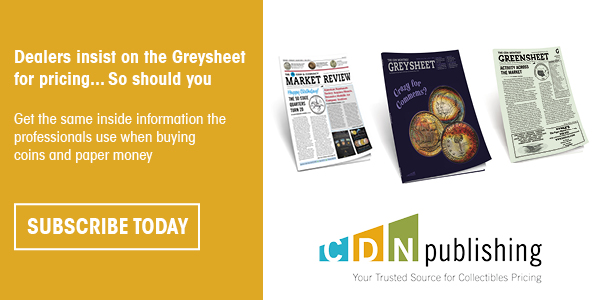
STACKS SPRING 2019 SULLIVAN LITERATURE SELECTIONS
Additional numismatic literature lots from the Sullivan library are coming up this Wednesday in the Stack's Bowers Spring 2019 Baltimore internet-only sale (lots 14252-14337). Here are a few that caught my eye. -Editor
Lot 14256: 1891 Rook's Our Paper Currency
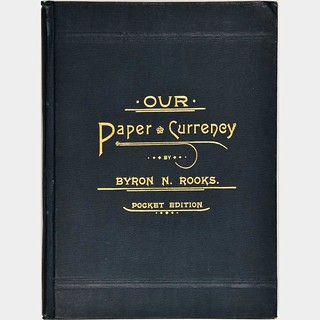 1891 Rook's Pocket Edition of Our Paper Currency in Green Cloth. Very Fine.
1891 Rook's Pocket Edition of Our Paper Currency in Green Cloth. Very Fine.
Titles and Specifications: Rooks, Byron N. Our Paper Currency. The Most Complete, Accurate and Reliable Instruction Extant in Regard to All the Safeguards found on Genuine Paper Currency Which Furnish Infallible Information. [Pocket Edition]. Portland, OR: Rutherford & Smith, 1891. 92 pages. Original green cloth, panels embossed in blind, gilt cover titles.12to, 13.5 x 18 cm. Printed agreement slip inside back cover signed by Wise. Gorgeous condition and unusual color (most are burgundy). This is ex Ford with his bookplate. Bold example. Ex: Kolbe-Stack's Ford Library Part I sale, June 1, 2004, lot 820.
Notes: A printed slip pasted to the rear endpaper required the recipient to sign in agreement that he would not loan "to any person excepting to those in whose loss our pecuniary interests are affected, and that a copy of any part of the same shall not be furnished to anyone." The book includes endorsements and recommendations at the end.
Interesting item - I don't believe I've ever seen one of these. -Editor
To read the complete lot description, see:
1891 Rook's Pocket Edition of Our Paper Currency in Green Cloth. Very Fine.
(https://auctions.stacksbowers.com/lots/view/3-GRTQK)
Lot 14265: 1870 Third Edition Heath's Pocket Detector
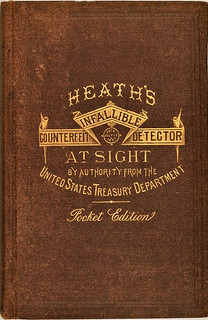
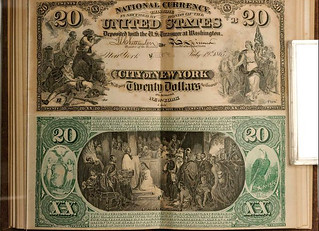
Heath's Pocket Detector - 1870 Third Edition. Unlisted Newman 3-P-3.5. About Fine.
hird Edition, Revised and Corrected. Boston, Mass. and Washington, D.C.: Published by Laban Heath & Co., No. 30 Hanover St., Boston, to whom all orders should be addressed, 1870. 40 pages includes 2 pages of magnifying glass illustrations, 1 page insert describing the unfinished counterfeit $20 City of New York, 1 page insert describing the unfinished counterfeit $10 Merchants NB of Chicago, 14 plates includes a double page fractional currency plate, counterfeit $100 First National Bank of Boston, unfinished counterfeit $20 City of New York, and unfinished counterfeit $10 Merchants NB of Chicago. Brown cloth, lettered in gilt, blind stamping, 12 mo.
Distinguishing Features: Three counterfeit National Bank Notes ($100 FNB Boston, unfinished $20 City of New York, and unfinished $10 Merchants NB of Chicago). Plates have been renumbered with printing vs. ink per Newman 3-P-3 with the exception of Plate 17.
Unknown to Newman was the unfinished $20 FNB of New York City plate replacing the $50 Legal Tender plate that appears in Newman 3-P-3. A pretty solid book. Any internal foxing is light. Attractive and important.
The sale includes numerous Heath editions not included in the public sale - no duplication - including versions unlisted in Newman like this one. -Editor
To read the complete lot description, see:
Heath's Pocket Detector - 1870 Third Edition. Unlisted Newman 3-P-3.5. About Fine.
(https://auctions.stacksbowers.com/lots/view/3-GRSOX)
Lot 14278: 1878 Thirteenth Edition Banking House Detector
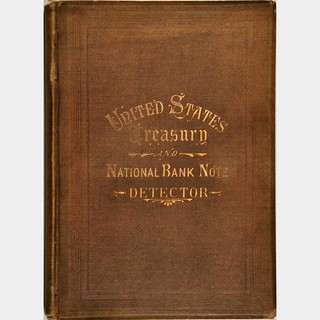 Heath's Banking House & Counting Room Detector - 1878 Thirteenth Edition. Unlisted Newman 13-BH-0. Very Good to Fine.
Heath's Banking House & Counting Room Detector - 1878 Thirteenth Edition. Unlisted Newman 13-BH-0. Very Good to Fine.
Thirteenth Edition. Washington, D.C. and Boston, Mass.: Address: Laban Heath & Company, Nos. 30 and 48 Hanover Street, Boston, Mass., 1878, Copyright, 1877. 45, [5] pages including one page on Heath folding magnifying glasses. 12 plates including an elaborately engraved title page frontis. Burgundy cloth, lettered in gilt, blind ruled, small quarto.
Distinguishing Features: Thirteenth edition, 1878 on the title page; copyright 1877 on page verso. While Newman calls for "2 pages of microscope illustrations," all of the Thirteenth editions only include one page with two illustrations of microscopes.
To read the complete lot description, see:
Heath's Banking House & Counting Room Detector - 1878 Thirteenth Edition. Unlisted Newman
13-BH-0. Very Good to Fine. (https://auctions.stacksbowers.com/lots/view/3-GRTB3)
Lot 14286: Dye's Government Counterfeit Detector Receipt

1892 Dye's Government Counterfeit Detector Vignetted Receipt. Fine.
Dye, John S. Dye's Government Counterfeit Detector. Philadelphia, 1892. Subscriptions receipt with a "RECIPE" to execute a COIN TEST on the back side. Overprinted in blue ink. Blue under tint of a bald eagle holding coins in its mouth on the face, but the vignette shifted left of center compared to earlier receipts. 16.5 x 7.5 cm. Paper residue at far left of face and small tack hole. In custom, acid-free archival paper display folder.
The sale includes a great array of counterfeit-detector related ephemera. These are by nature quite rare today and make interesting companions to a collection or display of the associated numismatic books. -Editor
To read the complete lot description, see:
1892 Dye's Government Counterfeit Detector Vignetted Receipt. Fine.
(https://auctions.stacksbowers.com/lots/view/3-GRTVM)
Lot 14308: 1868 Beazell's Instantaneous Detection

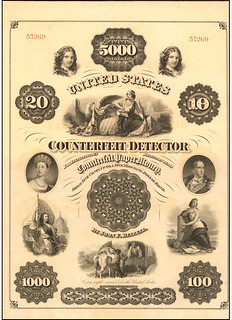
1868 Beazell's Instantaneous Detection of all American Counterfeits with Plate. Near Fine.
1868 edition printed by Vogt. (3), 4-16. Octavo, 14.5 x 23 cm. Pictorial front cover wrapper with eagle. Back wrapper complete. Perpendicular inserted plate tipped in before introduction Intaglio engraved plate printed by Continental Bank Note Company. The plate is choice with natural folds. Some cover wear, minor fold wrapper splits, and library stamp near top. Complete and attractive. Housed in custom sized mylar in acid-free paper archival display folder.
Check out the engraved broadside. -Editor
To read the complete lot description, see:
1868 Beazell's Instantaneous Detection of all American Counterfeits with Plate. Near
Fine. (https://auctions.stacksbowers.com/lots/view/3-GRUGL)
Lot 14315: Hawxhurst's Instantaneous Counterfeit Detector Card
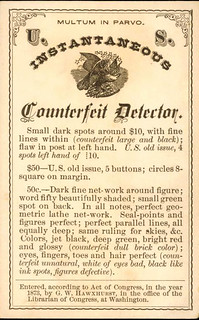 1873 Hawxhurst's U.S. Instantaneous Counterfeit Detector Card. Extremely Fine.
1873 Hawxhurst's U.S. Instantaneous Counterfeit Detector Card. Extremely Fine.
Hawxhurst, G.W. - Washington, 1873 patent. Uniface. Small card on buff paper stock. 7 x 11 cm. Vignette of eagle within titles. Text includes description of Stanton fractional note. Choice and bright. Ex Sklow Mail Bid Sale #6, February 2009, lot 668. Housed in custom sized mylar in acid-free paper archival display folder.
Great piece of ephemera - I've never seen one of these. -Editor
To read the complete lot description, see:
1873 Hawxhurst's U.S. Instantaneous Counterfeit Detector Card. Extremely Fine.
(https://auctions.stacksbowers.com/lots/view/3-GRUI3)
Lot 14320: Heath's Microscope Advertising Brochure

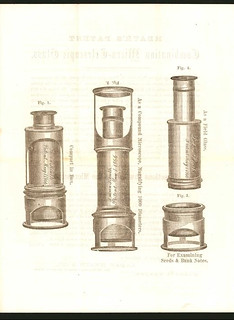
(Ca. 1870s) Laban Heath's Microscope Advertising Brochure. Very Fine.
An impressive and rare circular. White paper. 4pp. Large quarto, 21 x 28.5 cm. Titles, page with illustration of microscopes. Facing page refers to plates numbered in Banking & Counting House editions by Heath. The back page with prices and testimonials. Natural folds, but otherwise quite choice and bright. Rare items. Beautifully folded out within its custom made archival acid-free paper display folder in mylar. Essential to any Heath's collection of high caliber. Its preservation is nothing short of spectacular. The estimate may be conservative.
What a GREAT piece of numismatic ephemera. Quite rare - does another exist? -Editor
To read the complete lot description, see:
(Ca. 1870s) Laban Heath's Microscope Advertising Brochure. Very Fine.
(https://auctions.stacksbowers.com/lots/view/3-GRUIX)
Lot 14330: 1887 Counterfeiter Mugshot
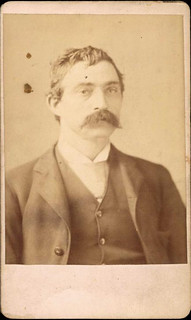
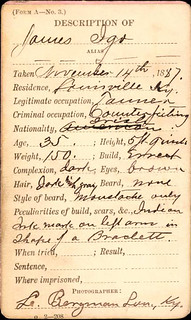
1887 Vintage Photograph of Counterfeiter's "Mugshot." Fine.
Fascinating period photo card for official use of this "Criminal Occupation" and handwritten on the verso, "Counterfeiter. Otherwise he was a farmer." 6 x 11 cm. Small spot in the upper left field. Housed in custom sized mylar in acid-free paper archival display folder.
Numismatic ephemera doesn't get much cooler than this. Meet the counterfeiter! -Editor
To read the complete lot description, see:
1887 Vintage Photograph of Counterfeiter's "Mugshot." Fine.
(https://auctions.stacksbowers.com/lots/view/3-GRUL9)
Lot 14333: Currency Counterfeit Warning Notice

(Ca. 1930s) Small size Currency Counterfeit Warning Notice for Retailers from the Denver Clearing House. Very Fine.
White paper. 4pp. Small octavo, 16 x 21 cm. Two pages with line drawings and diagnostics of counterfeit small size legal tenders and FRN. Back page with warnings and advice such as "delay the person [passing]." Interesting. Housed in custom sized mylar in acid-free paper archival display folder.
More great ephemera. -Editor
To read the complete lot description, see:
(Ca. 1930s) Small size Currency Counterfeit Warning Notice for Retailers from the Denver Clearing
House. Very Fine. (https://auctions.stacksbowers.com/lots/view/3-GRULU)
To read the earlier E-Sylum article, see:
SELECTIONS FROM THE STACKS-BOWERS SULLIVAN SALE
(https://www.coinbooks.org/v22/esylum_v22n05a02.html)

NEW BOOK: GUIDE BOOK OF U.S. COINS, 73RD EDITION
The 2020 Red Book is here! Here's the press release from Whitman Publications, forwarded by Dennis Tucker. Thanks! -Editor
Reports Dramatic Market Changes;
Covers Circulating, Commemorative, and Bullion Coins
Best-Selling Annual Guide Prices Nearly 8,000 Items
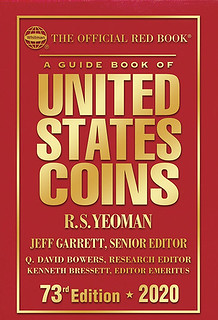 The newest edition of the coin hobby's annual Guide Book of United States Coins (popularly known as the "Red Book") will debut on April 9,
2019, two weeks before National Coin Week. The 73rd edition (with a cover date of 2020) features extensively updated pricing and auction data reflecting the
current market for collectible coins, which has seen dramatic ups and downs in the past year. The Red Book can be pre-ordered online (including at Whitman.com)
in several formats, and will be available from booksellers and hobby shops nationwide.
The newest edition of the coin hobby's annual Guide Book of United States Coins (popularly known as the "Red Book") will debut on April 9,
2019, two weeks before National Coin Week. The 73rd edition (with a cover date of 2020) features extensively updated pricing and auction data reflecting the
current market for collectible coins, which has seen dramatic ups and downs in the past year. The Red Book can be pre-ordered online (including at Whitman.com)
in several formats, and will be available from booksellers and hobby shops nationwide.
Coin collectors have used the Red Book to value their collections since the 1st edition was published in 1946. Senior Editor Jeff Garrett attributes the book's strength to its network of experts. "Our contributor system covers every segment of American coinage," Garrett said. "The 2020 edition reflects many changes in pricing and discoveries in numismatic scholarship made over the past year."
Editor Emeritus Kenneth Bressett remarked on the changing market: "Coin collecting has seen some major adjustments in prices and participation over the past couple of years. For those who are relatively new to the hobby this may seem unsettling and worrisome. Others, who have been involved for a decade or more, have witnessed similar trends and changes over the years and understand that such things are market adjustments that respond to collecting trends and interests. Values shown in the 2020 Red Book reflect these changes. Some are up and others are down. The most evident trend is that common, low-grade coins have lost some of their value because of the declining demand or participation by neophytes. Conversely, many rare coins, especially those in high grade, are regularly in demand and have seen dramatic price increases. Ultimately interest in coin collecting will continue along its rocky path as it has for hundreds of years. I look forward to the future utilizing all of the many innovative features of mass media and electronic communications that will make the hobby even more enjoyable to a new generation of collectors."
The 73rd-edition Red Book is 464 pages long and prices nearly 8,000 entries in up to 9 grades each, with more than 32,000 retail valuations in total. Its panel of retail-pricing contributors includes more than 100 active coin dealers and market analysts with decades of experience.
Research Editor Q. David Bowers said, "The annual Red Book stands as the one volume I keep at my side when buying, selling, or writing about coins. Year by year it has improved since I bought my first copy as a young teenager in 1952. The 2020 edition is the best ever."
The book covers United States coins from 1792 to date, from half cents to $20 gold double eagles, commemoratives, and bullion, plus earlier coins and tokens that circulated in colonial times. The latest coins from the United States Mint-Lincoln cents, Jefferson nickels, Roosevelt dimes, America the Beautiful quarters, Kennedy half dollars, Native American dollars, American Innovation dollars, commemorative coins, bullion coins, and government-packaged coin sets-are kept up to date. The book also includes error coins, Civil War tokens, Confederate coins, Philippine coins struck under U.S. sovereignty, private and territorial gold pieces, pattern coins, Hawaiian and Puerto Rican coinage, Alaska tokens, So-Called Dollars, special modern gold coins, and other specialized topics.
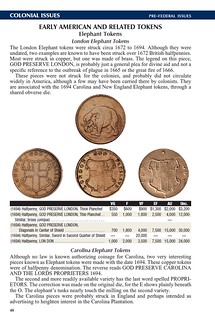
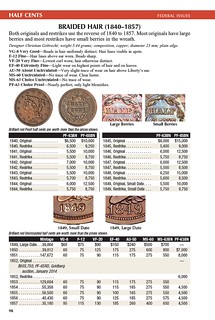
These are illustrated by 2,000 photographs, including enlarged close-ups of rare and valuable die varieties.
The 73rd-edition Red Book features the Mint's new 2019 commemorative coins. The Apollo 11 coins include a half dollar, a traditional silver dollar, a $5 gold piece, and the nation's first three-inch, five-ounce silver dollar. These coins are all cupped in shape, with the reverse convex to recreate the view of Buzz Aldrin's helmet, as photographed by Neil Armstrong on the surface of the Moon-with Armstrong, the U.S. flag, and the lunar module Eagle visible in the reflection. The new Red Book also includes the 2019 American Legion 100th-anniversary commemorative coins.
The 73rd edition covers 125 more individual coin issues than the 72nd edition, and 14 new coin sets. Mintages have been updated across the board using the latest numismatic research and government-supplied data.
Collectors will also find complete coverage of the full range of American Eagle and other bullion coins and sets (in silver, gold, platinum, and palladium), with mintages and values for each. "Last year we condensed the bullion sections to make room for new content," said Whitman publisher Dennis Tucker. "This year we're bringing back the full bullion catalog because we know how important these popular coins are to collectors."
The 73rd edition continues a section that debuted with the 70th, an overview of foreign coins that circulated as legal tender in the British American colonies and in the United States until the late 1850s. This section includes photographs, history, and pricing for collectible Spanish-American, Dutch, French, and English coins dating from the 1550s to the 1820s.
Edits based on recent research can be seen in the pre-federal sections. The text for collectibles such as the Pitt tokens, Rhode Island Ship medals, Fugio coppers, Georgivs Triumpho tokens, and 1792 "quarter dollar" patterns has been updated.
As in past years, collectors benefit from the Red Book's recent auction records provided for significant rare coins. Typeset throughout the charts are nearly 200 notable auction results. Combined with the listed retail prices, the auction data help advanced collectors understand the modern market for high-priced rarities.

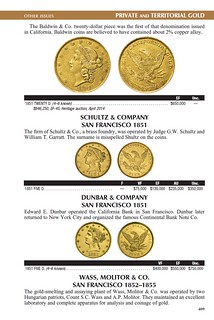
In addition, the appendix of the "Top 250 U.S. Coin Prices Realized at Auction" has been fully updated. "This is the first year the Top 250 includes more than 100 auction sales higher than $1 million each," observed P. Scott Rubin, the compiler of the records. "This is also the first year coins had to sell for more than $600,000 just to make the list." The coin at #250, a 1792 No Silver Center pattern cent, sold for $603,750, which is $26,250 more than #250 in last year's edition.
In a positive measure of the health of the hobby and ongoing numismatic research, the Red Book's newly revised and updated bibliography includes 37 standard references published within the past five years.
The cover of the spiral-bound 73rd edition shows a mix of old and modern American coins: an 1850 Baldwin & Co. $10 Horseman gold piece; the 2019 Apollo 11 commemorative silver dollar; and a World War II-era Liberty Walking half dollar.
All versions and formats (hardcover; spiralbound hardcover; spiralbound softcover; and Large Print) of the 73rd-edition Red Book will be available the second week of April 2019.
A Guide Book of United States Coins, 73rd edition
464 pages
Full color
By R.S. Yeoman; senior editor Jeff Garrett; research editor Q. David Bowers; editor emeritus Kenneth Bressett.
$15.95 convenient lay-flat spiralbound
$17.95 classic red hardcover
$19.95 spiralbound hardcover
$29.95 Large Print Edition
$49.95 expanded Deluxe Edition (1,504 pages)

NEW BOOK: 100 GREATEST ANCIENT COINS, 2ND EDITION
A new edition of Whitman's 100 Greatest Ancient Coins by Harlan Berk has been published. -Editor
of Harlan Berk's 100 Greatest Ancient Coins
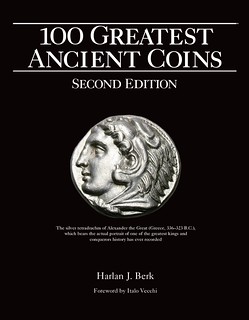 Whitman Publishing announces the release of the second edition of 100 Greatest Ancient Coins, by noted historian of the ancient world and
professional coin dealer Harlan J. Berk. The 144-page hardcover coffee-table book will debut March 12, 2019, two weeks before the American Numismatic
Association's National Money Show. It will be available from booksellers and hobby shops nationwide, and online (including at www.Whitman.com), for $29.95.
Whitman Publishing announces the release of the second edition of 100 Greatest Ancient Coins, by noted historian of the ancient world and
professional coin dealer Harlan J. Berk. The 144-page hardcover coffee-table book will debut March 12, 2019, two weeks before the American Numismatic
Association's National Money Show. It will be available from booksellers and hobby shops nationwide, and online (including at www.Whitman.com), for $29.95.
In this richly illustrated volume, Berk-one of the world's best-known ancient-coin dealers-takes the reader on a personal guided tour of the numismatic antiquities of Greece, Rome, the Eastern Roman (so-called Byzantine) empire, and other parts of the ancient world.
The first edition of 100 Greatest Ancient Coins was the fifth entry in Whitman Publishing's "100 Greatest" library (which now includes nearly a dozen volumes) and the first title in that collection to focus on non-American collectibles. It earned the Numismatic Literary Guild's prestigious award for Best Specialized Book on World Coins.

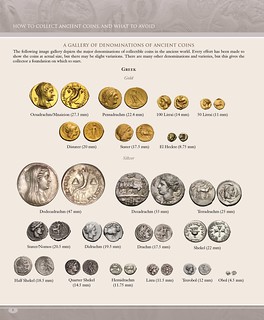
The new second edition includes a foreword by British numismatist and author Italo Vecchi, who calls the book "a remarkable catalog of 100 exceptional coins" and "invaluable for all serious ancient-numismatic academics, historians, dealers, and amateurs alike." In addition to coin-by-coin essays updated with the latest research, the second edition features many upgraded photographs, and new content. The latter includes a narrative on "How to Collect Ancient Coins, and What to Avoid," written in Berk's engaging, often humorously direct style, with real-world advice from his 55-plus years of experience. This includes insight on how to get started, where to find ancient coins, how to specialize, wise long-term decision-making, and storage and insurance. Berk discusses how to authenticate, grade, and assign value to ancient coins. His newly expanded introduction also includes a three-page image gallery of denominations of ancient coins, showing 55 Greek, Roman, and Byzantine coins-gold, silver, bronze, and copper-ranging in size from the tiny 4.5 mm obol to the hefty 47 mm silver dodecadrachm.
Berk offers an illustrated guide to grading ancient coins from the perfection of Fleur de Coin (FDC), a term the author considers over-used ("As a dealer, out of several thousand coins I grade each year, only one or two can truly be called FDC"), to worn Good condition. He describes the importance of artistic quality in ancient coinage, and how it changed over time. His market-oriented advice covers determining the value of ancient coins, being aware of counterfeits, and buying online. Berk offers market values for each of the individual specimens pictured in the book. And "The Education of a Numismatist" gives the reader resources on major numismatic associations, the importance of building a personal library for research, and extensive suggested readings, both general and specialized.
The process for determining the 100 Greatest Ancient Coins was complex. Berk submitted to Whitman Publishing a roster of about one hundred well-known scholars, active coin collectors, and professional dealers from around the world. Each was asked to list and prioritize, from 1 to 100, their choices for the most significant ancient coins. Their feedback was compiled and analyzed, resulting in the ranking of the 100 greatest. These include unique and high-valued pieces that most collectors can only dream about, but also more widely available and popular ancient coins.
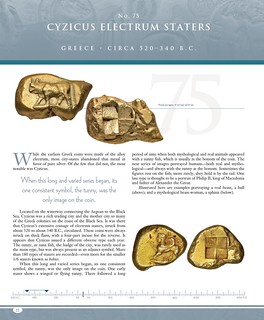
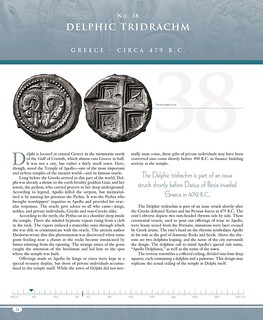
"Some of the 100 Greatest ancient coins are famous from passages in the Bible or other texts," said Whitman publisher Dennis Tucker. "Some are so beautiful and iconic that every collector wants one. Others have dramatic or poignant stories, or are connected to legendary figures. Each coin is steeped in history and has a unique tale to tell."
Berk has pointed out that a good number of the 100 Greatest are readily collectible for $100 or less. Others are valued in the thousands, or even hundreds of thousands, of dollars.
A two-page spread is devoted to each of coins No. 1 through No. 10, with Nos. 11 through 100 enjoying a full page. In the banner at the top of each page is the coin's rank; a descriptive title; the city, state, or region from which it hails; and its date of striking (or an approximation). Beneath is an enlarged illustration of the coin; a notation of its actual size in millimeters; and, ghosted in the background, the numerals of its 1-100 rank. This is followed by an essay that sets the coin in its historical foundation and describes the virtues of its numismatic greatness. At the bottom of the page, a timeline charts the coin's position in history, with the birth of Christ marked for context.
The book is rounded out by a gallery of relative sizes, showing each coin in its actual diameter, and a selected bibliography of research sources.
"100 Greatest Ancient Coins is not just a price guide or a fancy picture book," said Tucker. "This is a fascinating introduction to collecting and studying these important coins. Many hobbyists have been inspired and energized to start or expand their collections after reading Harlan Berk's work."
100 Greatest Ancient Coins, 2nd edition
By Harlan J. Berk; foreword by Italo Vecchi
ISBN 0794846327
Hardcover, 10 x 12 inches (coffee-table)
144 pages, full color
Retail $29.95 U.S.

NEW BOOK: NOTGELD ELBE-ELSTER
I learned about this new book on German notgeld from the February 26, 2019 issue of News & Notes edited by Loren Gatch for the Society of Paper Money Collectors. Here's a Google translation from the publisher's web page. -Editor
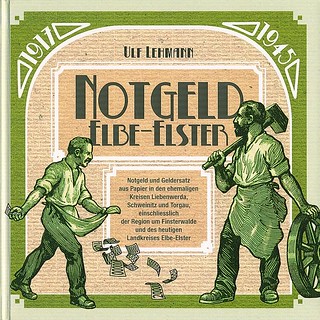 Notgeld and money substitute made of paper in the former circles Liebenwerda, Schweinitz and Torgau, including the region around Finsterwalde and the
present district of Elbe-Elster 1917-1945
Notgeld and money substitute made of paper in the former circles Liebenwerda, Schweinitz and Torgau, including the region around Finsterwalde and the
present district of Elbe-Elster 1917-1945
232 pages, completely colored, size 21.5 x 21.5 cm, hardcover, Herzberg, autumn 2018,
Price: 20,00 Euro, ISBN: 978-3-940635-59-4
With the outbreak of the First World War, cash was scarce throughout Germany. Cities and municipalities, districts and banks, even manors and clubs gave out in the episode own money. The author took up the subject and united in the present publication all paper money issues of the former districts Liebenwerda, Schweinitz and Torgau and the region around Finsterwalde.
From 1 penny to 500 billion marks, with over 500 illustrations illustrated, you will experience one of the most exciting chapters in the history of regional money.
Lately, publications on regional emergency money in Germany have been increasing again, making an important contribution to German monetary history in the period from the First World War to inflation to the period after the Second World War. The author has understood well how to document the regional Brandenburg and Saxon emergency money issues of the Elbe-Elster region, classify them in the historical context and supplement them with excerpts from contemporary newspapers and other documents.
Introducing the various emergency money epochs. Why here, as well as in the appendix to the used and further literature, only on the widespread catalogs of the series "German emergency money" is received, if this is not otherwise, but otherwise cited catalogs that have appeared only in small editions, remains the secret of the author. A rogue who thinks evil.
Otherwise, the book, which is arranged in the course of the former circles of the Elbe Elster region, I really liked and I can recommend it to any interested collector and regional history interested in this region.
It is also very nice that in the end, the participating printers and artists will be addressed.
The price of 20 euros is really very moderate for the book issued by the Herzberger Münzfreunde eV.
Interested parties please contact:
Verlag Bücherkammer, Torgauer Strasse 21, 04916 Herzberg, www.buecherkammer.de
For more information, or to order, see:
Lehmann: Notgeld Elbe-Elster
(https://www.geldscheine-online.com/start/lehmann-notgeld-elbe-elster)

JOURNAL OF ISLAMIC NUMISMATIC CENTER - EGYPT
Jere L Bacharach of the University of Washington submitted this notice of two new journals on Islamic numismatics. Thank you! -Editor
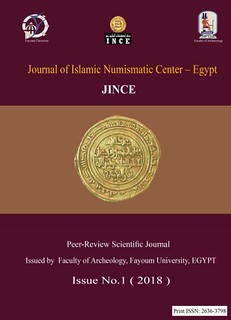 I am very pleased to share with your readers news of a new numismatic journal devoted to the study of Islamic numismatic material. It is entitled
"Journal of Islamic Numismatic Center - Egypt" or JINCE. It is being published by the College of Archaeology, Fayoum University, Egypt under the direction of
the College's Dean and very active Islamic numismatist, Dr. Atef Mansour Ramadan.
I am very pleased to share with your readers news of a new numismatic journal devoted to the study of Islamic numismatic material. It is entitled
"Journal of Islamic Numismatic Center - Egypt" or JINCE. It is being published by the College of Archaeology, Fayoum University, Egypt under the direction of
the College's Dean and very active Islamic numismatist, Dr. Atef Mansour Ramadan.
The table of contents in Arabic can be found at http://www.fayoum.edu.eg/arc/FirstM. Every article begins with a summary in Arabic and English of its contents. This is followed by the article itself allowing you to immediately download a pdf copy of the article if you wish. In the first issue, Vol 1 2018, there are 12 articles in Arabic and 4 in English.
Dr Atef encourages all of you to look at the journal and to consider submitting an appropriate article to it. A list of the editorial board can be found at http://www.fayoum.edu.eg/arc/FirstM/Committee.aspx. The link to the title page in English is under construction.
International Journal of Iranian Studies
In addition I just received a notice from Abbas Ahmadvand, an Iranian scholar, on a proposed journal in Persian Studies which, I believe in light of Abbas's
own interests, would welcome submissions on coinage associated with the Persianate world.
He wrote the following: "We are planning to establish a journal, the International Journal of Iranian Studies, under my editorship in the Foundation of Iranology, Tehran,Iran. We will send to you aims, scope, guidelines and call for papers soon, but, please let me tell you friendly, if you have a ready or unpublsihed English article on the Iranian history, Persian language and literature and the Iranian society, I will be so glad to publish it in our first issue."
DOUG WINTER BOOKS AVAILABLE ON NEWMAN PORTAL
The latest additions to the Newman Numismatic Portal are books authored by Doug Winter. Project Coordinator Len Augsburger provided the following report. -Editor
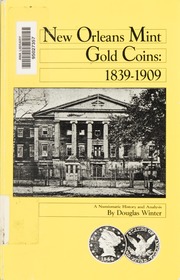 Courtesy of Doug Winter, a number of volumes on U.S. gold coins are now available on Newman Portal. Winter has done much to popularize collecting of
rare and better-date 19th century U.S. gold, and a good deal of his knowledge has been distilled into these books. While an Eliasberg-like quest of collecting
the entire series is out of reach of most, there are many approaches to collecting gold coins that need not require filling every hole in one's double eagle
album.
Courtesy of Doug Winter, a number of volumes on U.S. gold coins are now available on Newman Portal. Winter has done much to popularize collecting of
rare and better-date 19th century U.S. gold, and a good deal of his knowledge has been distilled into these books. While an Eliasberg-like quest of collecting
the entire series is out of reach of most, there are many approaches to collecting gold coins that need not require filling every hole in one's double eagle
album.
Collecting by branch mint is one popular approach, and indeed, this is a notion that Winter reinforces by publishing texts on a branch mint basis. New Orleans Gold Coins, 1839-1909, for example, discusses the New Orleans series on a date and mintmark basis, exploring rarity profiles, striking characteristics, and die varieties for each issue. Anyone interested in beginning a collection of similar coins will do well to consult these works.
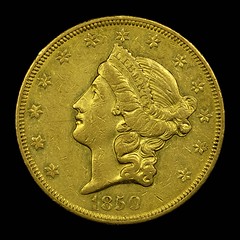
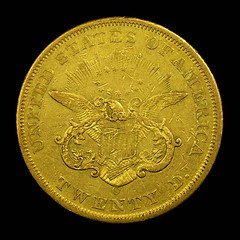
1850-O $20 NGC AU53 from Newman V (Heritage Auctions, 11/2014, lot 3335, realized $12,925).
Link to Doug Winter books on Newman Portal:
https://nnp.wustl.edu/library/booksbyauthor/2037
THE BOOK BAZARRE
OTAGO MUSEUM TO DIGITIZE ROMAN COIN COLLECTION
New Zealand's University of Otago is digitizing its collection of Roman coins. -Editor
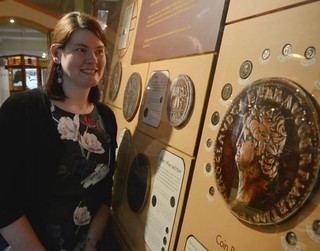 From dark designs mourning the dead, to figures celebrating military accomplishments and well-known buildings, Roman coins held by the Otago Museum
all bear a message, a University of Otago expert says.
From dark designs mourning the dead, to figures celebrating military accomplishments and well-known buildings, Roman coins held by the Otago Museum
all bear a message, a University of Otago expert says.
University of Otago classics lecturer Dr Gwynaeth McIntyre is working on the digitisation of the museum's collection of coins, which ties into her own research as well as benefiting the museum.
By the end of 2019, she hopes to create a website accessible to the public, featuring both the digital photographs of the coins and information about them.
Sometimes the message the emperor of the time wished to convey on the coin was a "different kind of narrative'' to the one found in literary or historical sources.
Promotion of family members and celebrating military victories were also depicted on the coins.
"We get lots of gods showing up, too,'' she said.
"You basically want to show that you love the gods, or that the gods are on your side.''
Dr McIntyre's area of expertise is the short but colourful dynasty of Julio-Claudian emperors from Augustus - Julius Caesar's great-nephew, who became emperor in 27BC- to the final ruler of the family, Nero, whose reign came to a grisly end in AD 68.
However the university's collection - second only in Australasia to the collection of Macquarie University, in Sydney - stretches beyond that time, from the third century BC to the fifth century AD, Dr McIntyre said.
There are in the region of 1200 bronze and silver coins, bearing a variety of designs.
There was only one gold coin in the whole collection, which was kept separate, Dr McIntyre said. It was rare, but she could not estimate its value.
To read the complete article, see:
Museum's Roman coin collection being digitised
(https://www.odt.co.nz/news/dunedin/museums-roman-coin-collection-being-digitised)

COMMEMORATIVE MANHOLE COVERS
Levin Messick writes:
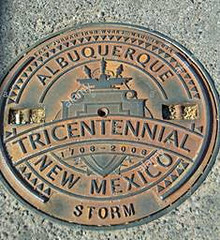 I could not help but chuckle when I read the article about collecting manhole covers. I was immediately reminded of a mentor of mine. Ralph
"Curley" Mitchell was a famous collector of "Odd and Curious Money". He was well known as such both here in California and nationally.
I could not help but chuckle when I read the article about collecting manhole covers. I was immediately reminded of a mentor of mine. Ralph
"Curley" Mitchell was a famous collector of "Odd and Curious Money". He was well known as such both here in California and nationally.
Among his "mainstream collections" were Chinese spade, knife, and bridge money. He had an example of Yap stone money in his back yard! I have never seen another outside of a museum. He was also a "Rag Picker" (obsolete currency collector) as am I. I think if Ralph was still with us and saw the illustration for the article he would probably have wished to add it to his collection as a specialty medal collectable!
Michael Wehner writes:
On a recent trip to Japan, I learned that manhole covers can be an art form. The first picture is from the Ueno Park in Tokyo, where the National Museum is. The other one is just a street in Otaru, Hokkaido, a small coastal tourist town.
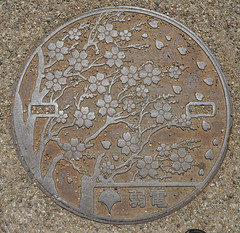
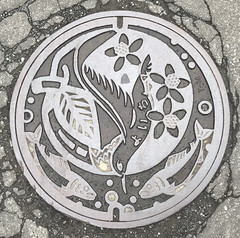
Very cool. Thanks, guys. A collecting specialty is born. -Editor
To read the earlier E-Sylum article, see:
MANHOLE COVERS AS NUMISMATIC OBJECTS
(https://www.coinbooks.org/v22/esylum_v22n08a07.html)

NOTES FROM E-SYLUM READERS: MARCH 3, 2019
Query: Guttag New York Storecard Sought
Robert Rightmire writes:
Does any reader have this Guttag storecard with "GUTTAG BROS./ NEW YORK" on the obverse (as shown in the ad: The Numismatist, June, 1927, p. 380)?
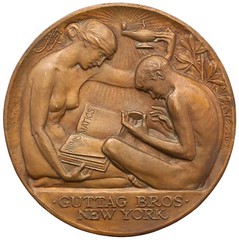
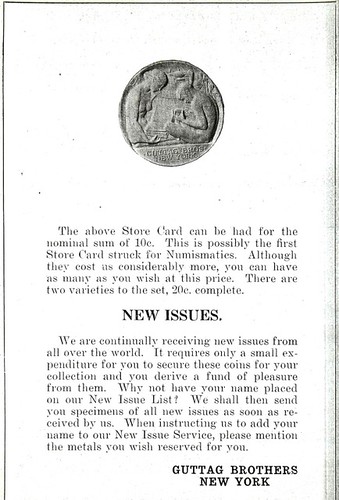
Can anyone help? -Editor
Query: Richmond, VA Encased Coin Info Sought
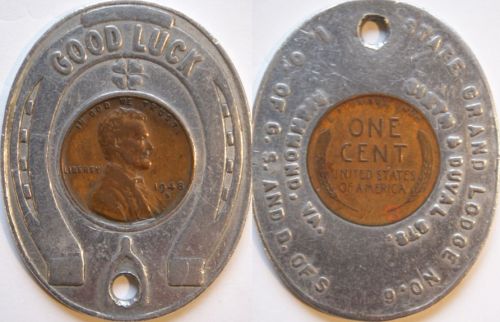
Bruce Perdue writes:
I am updating my website encasedcoins.info and am trying to identify the legend on an oval encased I bought on eBay a couple of years ago. It has the following legend around the reverse of the 1948 s cent.
"State Grand Lodge NO. 6 \ I.O. of G.S. and D. of S / Sixth & Duval Ste. \ Richmond, VA."
( I.O. of G.S. and D. of S.) could be the International Order of Girl Scouts...and D. of S? Grand Lodge brings to mind Masons, but I can not find a State Lodge No. 6 in Richmond, Va. The address appears to no longer exist using Google Maps. There are cross streets for 5th and 7th. No 6th. The obverse has a traditional "Good Luck" legend and a wishbone, a four leaf clover and horseshoe. I'm just wondering if any readers might know more?
Attributing maverick tokens can be tough. Can anyone help? -Editor
To visit the web site, see:
http://encasedcoins.info/
Cecil and Charles
Regarding Brooklyn coin club President Cecil "Charles" Ryan, Michael Wehner writes:
A good non-numismatic friend of mine passed away at 94 recently. He always went by Chuck, but his real name was Cecil. So the leap to Charles is not too hard to imagine.
To read the earlier E-Sylum article, see:
BROOKLYN COIN CLUB PRESIDENT CHARLES H. RYAN
(https://www.coinbooks.org/v22/esylum_v22n08a22.html)
Alice Eno Medal
In his article last week on Amos Eno, John Lupia wrote that "Two bronze childhood portraits of his niece Alice Eno were made into medals by Scudder in 1906 are in the ANS Collection." Tony Terranova provided the following images. Thanks! -Editor
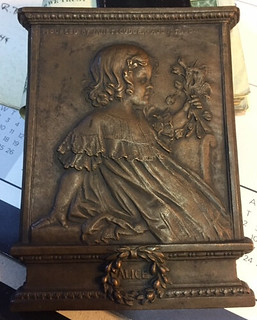
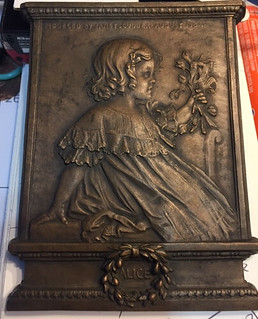
To read the earlier E-Sylum article, see:
AMOS F. ENO (1836-1915) (https://www.coinbooks.org/v22/esylum_v22n08a18.html)
Compugrade Box
Kellen Hoard writes:
I recently was fortunate enough to acquire and then sell what I believe is the first known slab box from the now defunct grading service Compugrade. Compugrade's holders are tremendously popular among slab collectors, so I knew that the box would be popular also. It features Compugrade's logo on the top and is in overall excellent shape with a few bumps on the corners. I believe the price I sold it before blasts past the previous record price for a slab box.
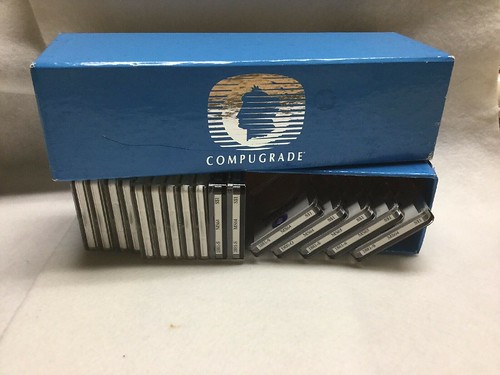
Cool find! -Editor
To read the earlier E-Sylum article, see:
NUMISMATIC NUGGETS: FEBRUARY 24, 2019 : Compugrade Medals
(https://www.coinbooks.org/v22/esylum_v22n08a29.html)
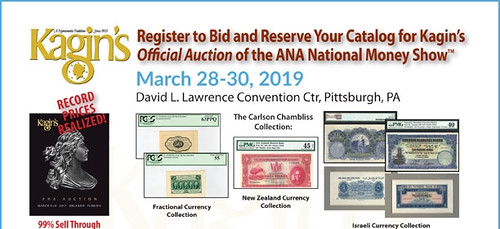
VOCABULARY TERM: CIRCULAR FORM
Dick Johnson submitted this entry from his Encyclopedia of Coin and Medal Terminology. Thanks. Back to basics this week! -Editor
Circular Form. Roundness. Coins are most often struck circular for the ease of coining, handling and compatibility with vending machines and such. Medals and medallic items are more varied in their shape because of less constraints of handling. But the circular form has somewhat of an artistic and sensuous shape - the circle is a form of perfection - designers may even prefer it when they have the opportunity to utilize any other shape.
Large medals are round for a simple reason they can be turned on a lathe at much less cost than expensive trimming procedures. Costs for trimming small medallic objects are about the same irrespective of shape and are least expensive when an existing trimming tool is available. In numismatic cataloging, shape is always considered; a circular object is considered the usual shape, and if no other shape is mentioned, it can be presumed the object is circular. All other shapes are considered "unusual," and must be so mentioned. See unusual shapes.
Looking for the meaning of a numismatic word, or the description of a term? Try the Newman Numismatic Portal's Numismatic Dictionary at: https://nnp.wustl.edu/library/dictionary
Or if you would like a printed copy of the complete Encyclopedia, it is available. There are 1,854 terms, on 678 pages, in The Encyclopedia of Coin and Medal Technology. Even running two a week would require more than 19 years to publish them all. If you would like an advance draft of this vital reference work it may be obtained from the author for your check of $50 sent postpaid. Dick Johnson, 139 Thompson Drive, Torrington, CT 06790.
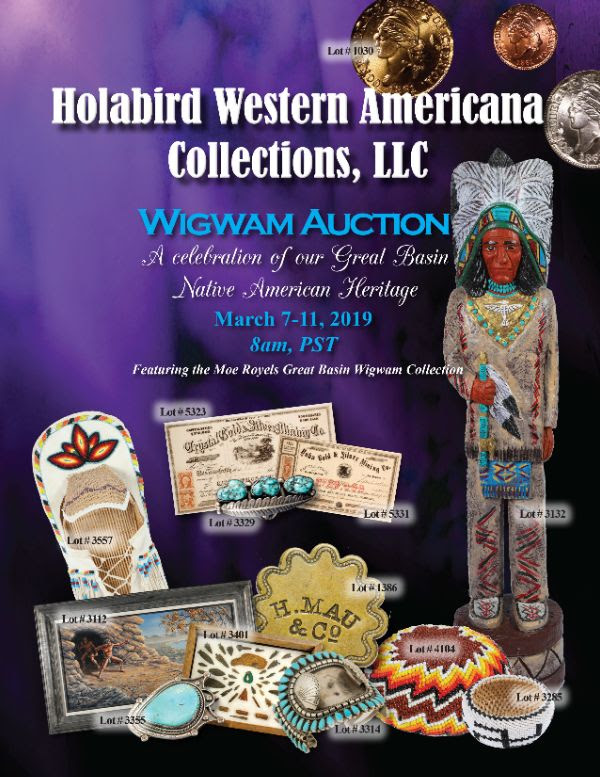
JOEL HERBERT DU BOSE (1860-1934)
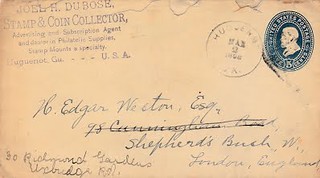 Joel Herbert Du Bose (1860-1934), was born on May 29, 1860, son of parents from South Carolina Captain Joshua W. Du Bose, who served during the Civil
War, and Frances M. Du Bose. His family are director descendants of James Du Bois, a French Huguenot, who led the French expedition that came to America to
escape religious persecution.
Joel Herbert Du Bose (1860-1934), was born on May 29, 1860, son of parents from South Carolina Captain Joshua W. Du Bose, who served during the Civil
War, and Frances M. Du Bose. His family are director descendants of James Du Bois, a French Huguenot, who led the French expedition that came to America to
escape religious persecution.
DuBose was a grocer in Petersburg, Georgia. He had been a life long collector of natural history specimens and stamps and coins and seems to have dabbled as a stamp and coin dealer from time to time.
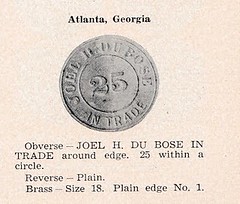 Du Bose issued a store card for 25c in trade. Melvin & George Full, The Token Collectors' Page, The Numismatist, Vol. 66, No. 6, June
(1953) " 595. His store card is not listed in Russell Rulau, Standard Catalogue of United States Tokens 1700-1900.
Du Bose issued a store card for 25c in trade. Melvin & George Full, The Token Collectors' Page, The Numismatist, Vol. 66, No. 6, June
(1953) " 595. His store card is not listed in Russell Rulau, Standard Catalogue of United States Tokens 1700-1900.
From October 1894 until March 1908 he served as Postmaster in Huguenot, Elbert County, Georgia.

Du Bose advertised his collecting areas of interest which included archaeological and conchological specimens, stamps, coins, and antiquated paper. Member List of the American Society of Curiosity Collectors published in their Bulletin, Vol. 1, No. 1, November 15, 1905, page 17.
He served as president for the Society of Philatelic Americans.
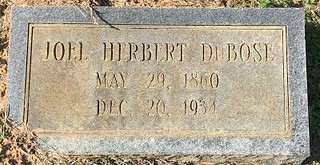 In 1930, he ran a Curio Mail Order Business from his home 836 Piedmont Avenue, NE, Atlanta, Fulton County, Georgia.
In 1930, he ran a Curio Mail Order Business from his home 836 Piedmont Avenue, NE, Atlanta, Fulton County, Georgia.
He died at his home 331 East Harvard Avenue, College Park, Georgia, on December 20, 1934. He was survived by his wife and five daughters.
To read the complete article, see:
DU BOSE, JOEL HERBERT
(https://sites.google.com/a/numismaticmall.com/www/numismaticmall-com/du-bose-joel-h)
The entire inventory of the Lupia Numismatic Library is for sale. Individual items will be available before the remaining archives are broken up into parcels sold at philatelic auctions in the U. S. and Hong Kong. Check NumismaticMall.com frequently as dozens of new items with estimates will be posted daily until everything is sold.
All inquiries will be given prompt and courteous attention. Write to: john@numismaticmall.com .
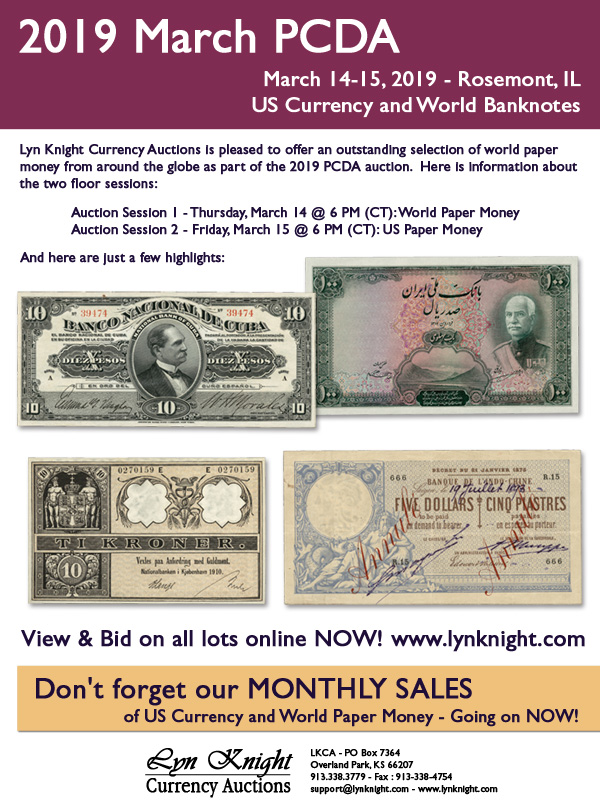
CHICAGO INDUCTS DUNHAM INTO HALL OF FAME
The Chicago Coin Club has announced the third inductee into its Hall of Fame. -Editor
Inducts William F. Dunham Into its Hall of Fame
The Chicago Coin Club announces that the third person to be inducted into its Hall of Fame is collector and author William Forrester Dunham, 1857-1936, owner of an 1804 dollar and an 1822 half eagle. His Hall of Fame citation has been published on the club's Hall of Fame web page, www.chicagocoinclub.org/projects/hof .
Twelve Hall of Fame inductees have been selected. Each of the remaining nine will be announced at the rate of one per month, April through December, during the Chicago Coin Club's centennial year, 2019.
The Chicago Coin Club was organized in 1912 as American Numismatic Association Branch No. 1, and reorganized under its present name in 1919. All are invited to join. To become a member you must attend a meeting and submit an application along with a membership fee of $20 ($10 for Junior membership). A first reading of your application will be held at this meeting, and a second reading at the next monthly meeting, following publication of your name in the club newsletter. (You are not required to be present for the second reading.) Upon membership approval, you will become a member.
The Chicago Coin Club holds monthly meetings in downtown Chicago, plus at major numismatic conventions such as Central States, with a speaker featured at every meeting except the annual auction, held at the November meeting.
Here is the text of the William Forrester Dunham entry. -Editor
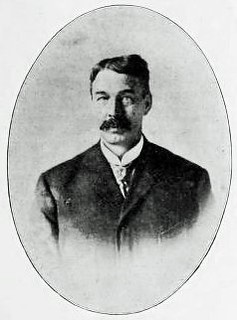 Though he seems never to have held elective office in the Chicago Coin Club, Charter Member 17 (February or March 1919) William Forrester Dunham was
an avid booster. That very year he minted aluminum tokens inscribed WILLIAM F. DUNHAM/ ONE/ MILL/ 1919// GEORGE WASHINGTON/ ONE/ DISME/ 1792, using them as a
premium to encourage others to join: for annual dues of one dollar, members received a free souvenir One Mill token in addition to the club Bulletin. Prior to
the formation of the Club, he was President of the Chicago Numismatic Society in 1905 and 1907, Chairman of the American Numismatic Association Board of
Governors in 1909, and a Governor in 1915.
Though he seems never to have held elective office in the Chicago Coin Club, Charter Member 17 (February or March 1919) William Forrester Dunham was
an avid booster. That very year he minted aluminum tokens inscribed WILLIAM F. DUNHAM/ ONE/ MILL/ 1919// GEORGE WASHINGTON/ ONE/ DISME/ 1792, using them as a
premium to encourage others to join: for annual dues of one dollar, members received a free souvenir One Mill token in addition to the club Bulletin. Prior to
the formation of the Club, he was President of the Chicago Numismatic Society in 1905 and 1907, Chairman of the American Numismatic Association Board of
Governors in 1909, and a Governor in 1915.
Mr. Dunham (Oct. 3, 1857 - Oct. 12, 1936), a graduate of the University of Illinois, tried his hand at teaching school, then entered the grocery business. He later became wealthy as a druggist in Chicago and member of the Chicago Stock Exchange. His collecting interests stretched from Greek, Roman, and Japanese coins to United States coins, Hard Times Tokens, encased postage stamps, and Papal medals. In 1904 he bought the Dexter specimen of the 1804 dollar for $1,100, and in 1906 snared the H.P. Smith example of the 1822 half eagle for $2,165. Both coins were shown at the 1920 ANA convention in Chicago. (His remaining collection of U.S. coins was almost complete.)
He was the author of Easy Finding List of Hard Times Tokens (1910) and Check List of Encased Postage Stamps (1915), both still useful. A life member of the Art Institute of Chicago, he gave his collections of Greek, Roman, and Japanese coins and Papal medals to them. But he was more possessive of his United States coins: per Lee Hewitt (Hall of Fame No. 6) in 1961, citing J. Henri Ripstra (Hall of Fame No. 1), who was present, "the agent of the late J. P. Morgan … offered Mr. Dunham $40,000.00 for the 1822 half eagle - at that time $10,000.00 was the highest price that had ever been paid for a U.S. coin - and Dunham turned it down with the comment that Mr. Morgan with all his millions did not have enough money to buy that coin."
(In his catalog entry for the 1822 half eagle, B. Max Mehl gives $35,000 as the final offer.) With the rest of his U.S. coins, it remained in the Dunham Collection until his death. Of B. Max Mehl's 1941 catalog of the Dunham Collection, John W. Adams wrote, "A+; Landmark Sale: …Definitive for encased postage, pattern dimes…"
To read the complete article, see:
William Forrester Dunham (http://www.chicagocoinclub.org/projects/hof/m03.html)
To read the earlier E-Sylum article, see: CHICAGO INDUCTS RACKUS INTO HALL OF FAME (https://www.coinbooks.org/v22/esylum_v22n04a23.html)

ROYAL CANADIAN MINT MASTER MARIE LEMAY
Here's an excerpt from a story in Canadian Coin News about the new head of the Royal Canadian Mint. -Editor
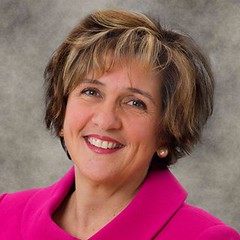 A new master of the Royal Canadian Mint was recently appointed by Finance Minister Bill Morneau.
A new master of the Royal Canadian Mint was recently appointed by Finance Minister Bill Morneau.
Marie Lemay, who has extensive experience in public policy and served in senior leadership positions within the government over the past two decades, was appointed to a five-year term. The order-in-council authorizing Lemay's appointment listed her annual salary range between $271,000 and $318,800. Her first day was this Monday, Feb. 18.
"Her background in public policy and substantial experience in providing strategic advice and making decisions on complex and sensitive issues make her an ideal fit for this important role," said Morneau. "I am certain that the Mint will benefit from the breadth of her expertise, and I wish her great success in her new position."
Lemay succeeds interim president and CEO Jennifer Camelon, who was at the helm of the Mint since last summer, when Sandra Hanington suddenly resigned three years into her five-year term, citing the need for an improved work-life balance.
To read the complete article, see:
Royal Canadian Mint's new master appointed to five-year term
(https://canadiancoinnews.com/new-rcm-master-appointed-to-five-year-term/)

ANCIENT COINS IN APRIL 2019 ROBINSON AUCTION
Frank Robinson sent the following press release for his upcoming sale of ancient coins. Check it out. -Editor
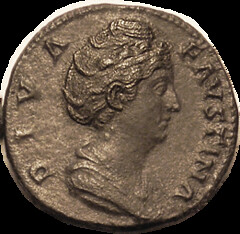 Dealer Frank S. Robinson will conduct his 108th mail and internet auction of Ancient and Early Coins with a closing date of April 9. The sale will
include 523 lots, with low minimum bids, and bids to be reduced as competition permits. Robinson notes that reductions have averaged 15-25% in his recent
sales. There is no buyer fee.
Dealer Frank S. Robinson will conduct his 108th mail and internet auction of Ancient and Early Coins with a closing date of April 9. The sale will
include 523 lots, with low minimum bids, and bids to be reduced as competition permits. Robinson notes that reductions have averaged 15-25% in his recent
sales. There is no buyer fee.
Noteworthy among Greek coins in the sale are a classic Athenian "Owl" Tetradrachm in EF, and a New Style Tetradrachm in AEF; an Egyptian Tetradrachm of Ptolemy I as Satrap graded Choice AEF; two rare Elymais silver tetradrachms; VF Tetradrachm of Persis King Autophradates; VF Tetradrachms of Gela, Demetrios Poliorketes, and Agathokles of Syracuse; and good run of Parthian coins.
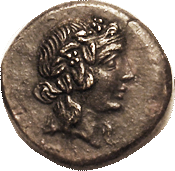

Roman highlights include a high grade Legionary Denarius of Mark Antony; a Choice EF Agrippina Senior Sestertius; a PPescennius Niger Denarius; a Choice EF Paulina denarius; and a large bronze of Julian II also graded Choice EF The auction also includes Byzantine (with a special run of gold coins, and other early coinages, group lots, literature, and a section of items offered at fixed prices
Robinson holds about three such sales annually, and tries to offer a broad range of material for advanced collectors as well as bargain hunters. Catalogs are free; contact Robinson at Box 8600A, Albany, NY 12208; phone/fax 518-482-2639; e-mail frank@fsrcoin.com. The full catalog will be at his website, www.fsrcoin.com.

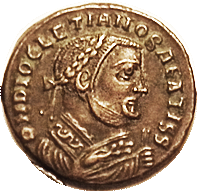
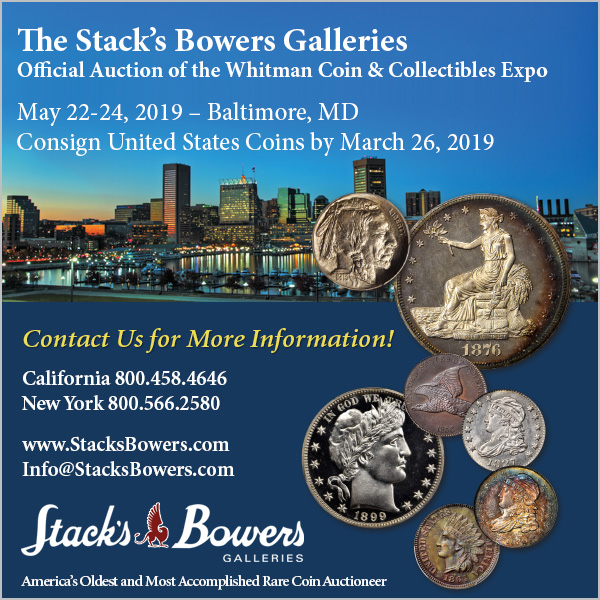
STACKS BOWERS SPRING 2019 AMERICANA SELECTIONS
Here are some lots that caught my eye in the Stack's Bowers Spring 2019 Baltimore internet-only sale. -Editor
Lot 10008: Major John Andre Medal
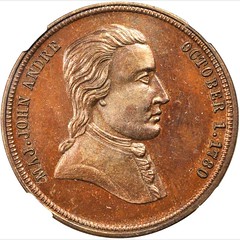

Undated (ca. 1860) Major John Andre. Bronze. 34 mm. MS 64 BN (NGC).
Obv: Portrait of Andre right, name and date around. Rev: Central image of church building, inscription OLD DUTCH CHURCH, TAPPAN. / WHERE MAJ. ANDRE WAS TRIED around. Major Andre was a British officer who was tried and hanged at Tappan, New York in 1780 for conspiring with Benedict Arnold to have West Point surrender to the British during the Revolutionary War.
Great revolutionary war history item. -Editor
To read the complete lot description, see:
Undated (ca. 1860) Major John Andre. Bronze. 34 mm. MS 64 BN (NGC).
(https://auctions.stacksbowers.com/lots/view/3-GQAEX)
Lot 10060: Merriam Everett-Bell Medalette
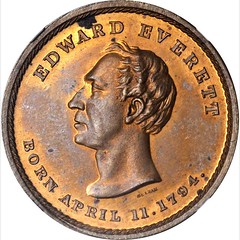
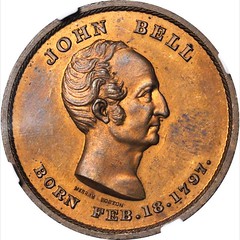
1860 John Bell. DeWitt-JBELL 1860-4. Copper. 31 mm. MS-64 BN (NGC).
Provenance: From the Rosie Collection. Earlier ex Al Anderson, November 1983, lot B-33; our sale of the Brian Dobbins Collection of American Political Tokens, March 2018, lot 262.
To read the complete lot description, see:
1860 John Bell. DeWitt-JBELL 1860-4. Copper. 31 mm. MS-64 BN (NGC).
(https://auctions.stacksbowers.com/lots/view/3-GQ52U)
Lot 10080: Bolen Pynchon House Token
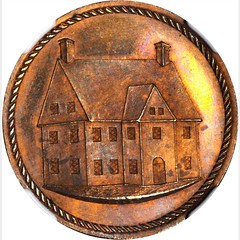
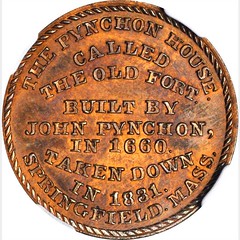
"1831" (ca. 1881) Pynchon House. Copper. 25 mm. Musante JAB-39. MS-65 RB (NGC).
Provenance: From the Ralph A. Edson Collection.
Like the Major Andre medal above, this one depicts an historical building. It's no architectural masterpiece, but this is a nice way to memorialize a lost landmark. -Editor
To read the complete lot description, see:
"1831" (ca. 1881) Pynchon House. Copper. 25 mm. Musante JAB-39. MS-65 RB (NGC).
(https://auctions.stacksbowers.com/lots/view/3-GQ1PQ)
Lot 10094: 1980 Jovine Dreamer of Dreams Medal

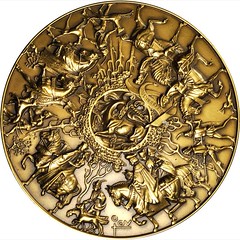
Lot of (2) Society of Medalists Medals. Bronze. Mint State.
Included are: 1980 Dreamer of Dreams, 74 mm, by Marcel Jovine, Alexander-SOM 101.1; and undated 1981 Enrichment of Life, 73 mm, by Elizabeth Gordon Chandler, Alexander-SOM 104.1. Both are accompanied by the descriptive brochures.
Provenance: From the Collection of Samuel Morse Felton, 1926-2015.
The Society of Medalists medals are a great series. The lot includes a beautiful piece by Marcel Jovine. -Editor
To read the complete lot description, see:
Lot of (2) Society of Medalists Medals. Bronze. Mint State.
(https://auctions.stacksbowers.com/lots/view/3-GQ2B0)
Lot 10114: 1961 Pony Express Termination Centennial Medal
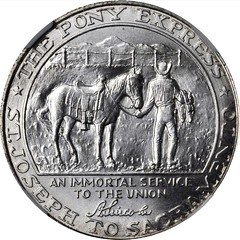
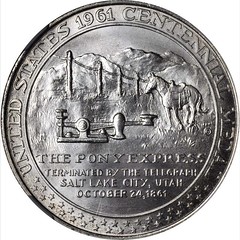
1961 Pony Express Termination Centennial. Silver. 33 mm. HK-588, Turner-5. Rarity-3. MS-69 (NGC).
As a student of the history of business and technology, I like this landmark event commemorative. The romance of the Pony Express defined an era that was promptly ended with the introduction of a much cheaper and efficient method of cross-continental communication. Most such transitions happen slowly, without many people even noticing until the transition is complete.
For those like me old enough to remember The Andy Griffith Show, Google the "Goodbye, Dolly" episode where the milkman gets a truck and has to put his horse out to pasture - it's a classic. When I was a kid we had a milkman in our neighborhood making deliveries twice a week with his refrigerated truck. Think Uber Eats, but for milk and juice. Amazon's probably already working on drones. To eliminate waste, I wouldn't be surprised if they have udders to squirt liquids into refillable bottles, like little flying cows without the flatulence. You read it here first... -Editor
To read the complete lot description, see:
1961 Pony Express Termination Centennial. Silver. 33 mm. HK-588, Turner-5. Rarity-3. MS-69 (NGC).
(auctions.stacksbowers.com/lots/view/3-GQ22S)

SELEUCID COINAGE, PART TWO
On February 28, 2019, published the second installment of a two-part CoinWeek series on Seleucid coinage. Here's an excerpt - be sure to read the complete article online. -Editor
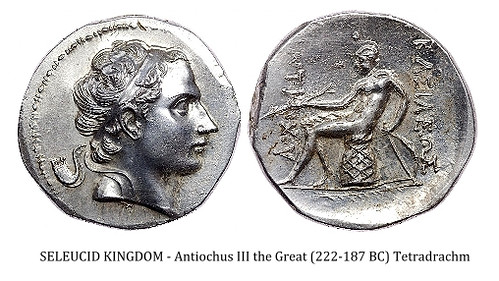
An idealized portrait of young Antiochus appears on a beautiful tetradrachm from an uncertain mint in Phrygia. The standard reverse of Apollo seated on the omphalos stone, testing an arrow appears on most of his silver and gold coinage. The gold is quite rare; a few massive octodrachms (34 grams - over an ounce) were probably struck as royal presentation pieces with the same dies used for silver tetradrachms. A unique example brought almost $69,000 in a 2012 European auction.
In June, 217 BCE, Antiochus III was defeated by the Egyptian army of Ptolemy IV at Raphia, near Gaza in Palestine-despite the superiority of Seleucid Indian war elephants over Ptolemy's smaller North African forest elephants. The war elephant appears on some late tetradrachms of Antiochus.
To read the complete article, see:
CoinWeek Ancient Coin Series - The Seleucids
and Their Coins: Part II (https://coinweek.com/ancient-coins/coinweek-ancient-coin-series-the-seleucids-and-their-coins-part-ii/)
To read the earlier E-Sylum article, see:
SELEUCID COINAGE, PART ONE (https://www.coinbooks.org/v22/esylum_v22n05a20.html)
1670 NEW FRANCE 15 SOLS DISCOVERED
A rare coin struck in Paris for the colony of New France in North America has been discovered by a Canadian dealer. Here's an excerpt from the story in Canadian Coin News. -Editor
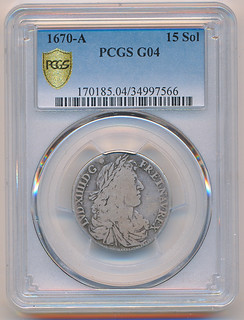 A newly discovered 1670-dated 15-sol coin struck at France's Paris Mint was recently acquired by long-time “Ancien Régime” collector
and Montréal dealer Michael Joffre.
A newly discovered 1670-dated 15-sol coin struck at France's Paris Mint was recently acquired by long-time “Ancien Régime” collector
and Montréal dealer Michael Joffre.
The 15-sol piece represents the largest silver denomination in the first series issued by France for circulation in its colonies in North America. This denomination has long been considered one of the rarest, most important and most valuable coins in Canadian numismatics, said Joffre, who's the president and head buyer of Carsley Whetstone.
According to Joffre, this coin brings the known population up to 15 examples.
On March 24, 1670, King Louis XIV ordered 100,000 livres of coinage minted for New France. The first coins issued for use in what would later become Canada, they were minted "to facilitate commerce" according to Alfred Sandham's 1868 book Coins, Tokens and Medals of the Dominion of Canada.
Denominations of five sols and 15 sols were struck in silver while a two-deniers piece was struck in copper. The coins' Latin inscription refers to the king, whose bust is depicted on the obverse: "They shall speak of thy glory of thy kingdom." Beneath the inscription is the Paris Mint mark, "A."
"This is certainly a bucket list coin for me, and one of the ones I have wanted since childhood," said Joffre. "It is a collector's dream come true, and it will be a joy to show other Montréal collectors as it is such an important piece of history."
To read the complete article, see:
Montréal collector brings newly
discovered 1670-dated 15 sols back to Canada
(https://canadiancoinnews.com/montreal-collector-brings-newly-discovered-1670-dated-15-sols-back-to-canada/)
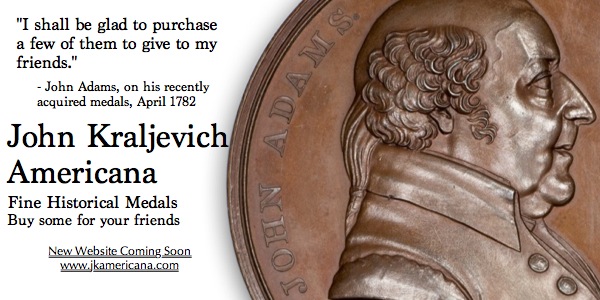
THE COINS OF JOSEF WILD
The Künker firm published an interesting article on the private gold coinage of Josef Wild. Here's an excerpt. -Editor
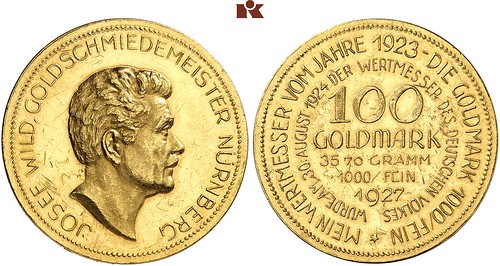
Josef Wild. 100 gold marks 1927.
On 15 March, 2019, the Osnabrück auction house Künker is auctioning off a collection which, until today, represents a highly sensitive issue from a monetary policy point of view. In the 1930s, Josef Wild attempted to return to the gold standard with private gold coins. The continuing topicality of his effort is illustrated by the fact that, in the late 1990s, Bernard von NotHaus did the same with the Liberty Dollar. Both men tried to supplement the official fiat currency at risk of inflation with a private gold coin of stable value.
But let us start from the beginning. When the last Prussian 20-mark coin was struck at the Berlin mint in 1915, the hundredweight of subsidized potatoes cost 4.70 marks in the city of Münster. By 1918, the hungry Munster citizens paid 150 marks for a hundredweight of windfall apples on the black market. A pound of bacon cost 40 marks, a pound of butter 26.
This is how the German (gold) mark decreased in value during the four years of the war, even though at first that was barely noticeable when looking at official prices and wages. And of course, the old gold coins had been completely vanished from circulation. The German currency which has become known as fiat money - a currency whose credentials are based on the reputation of the German state.
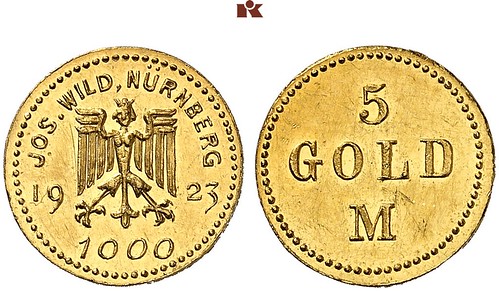
Josef Wild. 5 gold marks 1923.
And in November of 1918, that reputation was not exactly at its highest. The Empire had 150 billion marks in debt. To put that into perspective: The entire national income in 1919 was estimated at 142 billion marks. On top of that, there were immense reparations to be paid. In order to be able to cover at least the domestic costs, the government started the money press. Which resulted in a huge decrease in value: If you had a nice 1,000 marks in August 1914, you were left with 10 marks in October 1921 - in terms of purchasing power -, and with 1 in October 1922. Thus, the assets had already melted away before the actual hyperinflation started, which made the price of a stamp soar from 15 pfennigs to one billion marks.
The end of hyperinflation came with the German Rentenmark . On the 15th of October, 1923, the German Rentenbank was founded. Its assets were made unaffected by the inflation, which was mortgaged at a total of 3.2 billion bond markets . For the mortgage, the property owners have to pay interest. The magic trick worked: The bearer bonds circulating as banknotes were accepted by the entire population as secure currency.
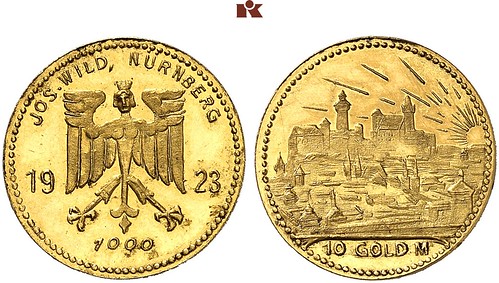
Josef Wild. 10 gold marks 1923.
Or let's say better, almost the entire population accepted them, because a small goldsmith in Nuremberg took up the fight against the new Fiat currency.
We do not know too much about that Josef Wild, who did not want to know anything about the currency deals of the authorities. Most of the documents that could tell us more about his life have been burned during the Second World War. We know his date of birth, March 13, 1872. We are also told orally that he was short and stocky and in 1897 had passed the Master's examination as a master goldsmith. In addition we have a portrait, which he left for himself on his private 100 gold mark of 1927.
Josef Wild grew up with the gold mark of the German Empire. He refused to accept the paper from the period of hyperinflation which was not replaced by a new gold currency, but another fiat money which was just as vulnerable to inflation. He demanded a currency of stable value.
And since the German state did not provide any, he had minted at his own expense.
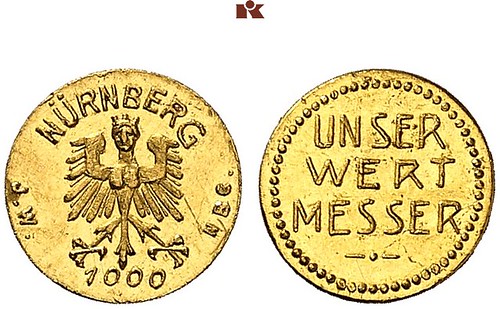
Josef Wild. 1 gold mark without year (1923).
To read the complete article, see:
Making the case for the gold standard: The coins of Josef
Wild (https://www.kuenker.de/de/information/presseinformationen/aktuelle-mitteilungen/232)

ANOTHER 1943 COPPER CENT SURFACES
We recently discussed the Don Lutes discovery specimen of the 1943 copper Lincoln Cent error. The publicity over its sale has caused another example to surface. Here's the news release form NGC. -Editor
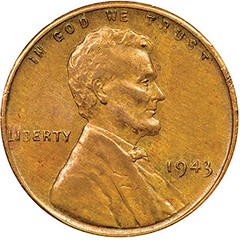

Fewer than two dozen Philadelphia Mint examples of these famous mint errors are known to exist.
Numismatic Guaranty Corporation (NGC) has certified a 1943 Copper Cent that was found in a gumball machine decades ago. The 1943 Copper Cent is generally regarded as the most famous of all mint errors.
All 1943 cents were supposed to have been struck in zinc-coated steel so that copper could be conserved for more important uses during World War II. Nevertheless, a few were mistakenly struck in copper (its composition is technically bronze) and found their way into circulation.
Examples are known from all three mints that produced cents that year: Philadelphia, San Francisco and Denver, with the Philadelphia examples being the most numerous. Still, only about 20 Philadelphia examples are known to exist.
The 1943 Copper Cent recently certified by NGC was found in a gumball machine in Philadelphia in 1976. It was then sold to a collector for the then-significant sum of $1,000.
The buyer passed down the coin to his children, who decided to submit it to NGC for certification after seeing that another NGC-certified 1943 Copper Cent - the Don Lutes, Jr. Discovery Specimen - had sold for $204,000 at auction in January. That specimen is named for the teenager who discovered the first 1943 Copper Cent in 1947 in his change.
The family checked the NGC Dealer Locator on NGCcoin.com to find an NGC Authorized Dealer who could assist with the submission. They found Hudson Rare Coins, which submitted the family heirloom to NGC on their behalf. NGC graded it XF Details.
"When someone calls to say that they have a 1943 Copper Cent, you never expect it to be real. It was therefore an incredible thrill when NGC confirmed this coin as a genuine example," says Mitchell A. Battino, president of Hudson Rare Coins. "Now that it is certified by NGC there will never be any doubts about the authenticity of this great rarity."
Hudson Rare Coins will represent the family in the sale of this recently NGC-certified example of the "king of mint errors."
So who remembers gumball machines? It seems every week I run into a reference to something that only reminds me of how old I am. Those used to be found everywhere, including at the local drug store in the Pittsburgh neighborhood I grew up in. I don't remember if those took cents or nickels, but here's an image of a 1960s one that took both.
I'm sure dealers all across the country fielded calls from people claiming to have one of these rare babies after the story of the Lutes specimen hit the news wires. Occupational hazard, I suppose. But good finds do happen and this is a nice outcome for the collector's family. -Editor
To read the complete article, see:
NGC Certifies Rare 1943 Copper Cent
(https://www.ngccoin.com/news/article/7207/1943-bronze-cent/)
To read the earlier E-Sylum article, see:
Gumball Machine Atlas Master Penny & Nickel
(https://www.liveauctioneers.com/item/23204999_gumball-machine-atlas-master-penny-and-nickel)
To read earlier E-Sylum articles, see:
DISCOVERY SPECIMEN 1943 BRONZE CENT GRADED
(https://www.coinbooks.org/v21/esylum_v21n33a16.html)
MEDIA COVERAGE OF LUTES 1943 COPPER CENT
(https://www.coinbooks.org/v22/esylum_v22n02a28.html)

THE MASSACHUSETTS MEDAL OF LIBERTY
Anne E. Bentley writes:
I didn't even know the Commonwealth of Massachusetts had a Medal of Liberty!
Anne included a link to an application page from the Massachusetts National Guard site (linked below). There are many articles out there on the awarding of the medal to individuals, but I couldn't find much else on the medal itself. The best I've found (other than the National Guard page) is this summary from Wikipedia. The image was conveniently extracted from the .pdf file by Google. -Editor
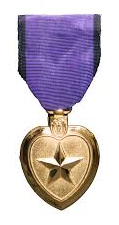 The Massachusetts Medal of Liberty is awarded to Massachusetts service men and women who have been killed in action or who died as a result of wounds
received in action. It is bequeathed on behalf of the Governor of the Commonwealth of Massachusetts as Commander-in-Chief of the Commonwealth. The medal was
designed by Sgt. Kristopher W. Adams.
The Massachusetts Medal of Liberty is awarded to Massachusetts service men and women who have been killed in action or who died as a result of wounds
received in action. It is bequeathed on behalf of the Governor of the Commonwealth of Massachusetts as Commander-in-Chief of the Commonwealth. The medal was
designed by Sgt. Kristopher W. Adams.
The medal is heart-shaped to symbolize the Purple Heart and is attached to a 1 3/8 inch wide ribbon with a black border representing mourning.
The centre of the medal bears a Gold Star symbolizing Gold Star Mothers Club.
At the top centre of the medal is the coat of arms of the Commonwealth of Massachusetts and on the rear side is the service member's branch of service with a blank space to have the honored service member's name engraved by recipient and the words "In Honored Memory" engraved above and "Service and Sacrifice" below.
Here's some more from the National Guard page. -Editor
Massachusetts General Laws Chapter 33, Section 67A
"There shall be a medal of liberty which shall be awarded to the next of kin of service men and women from the commonwealth killed in action or who died in service while in a designated combat area in the line of duty or who died as a result of wounds received in action."
Description: Heart shaped medal symbolic of the purple heart with a gold border, 1 3/8 inches wide. The center of the medal bears the Gold Star. The top center of the medal is the coat-of-arms of the Commonwealth. The reverse of the medal top depicts the branch of service of the member. The Reverse consists of the words, "In Honored Memory" above the name engraving surface and "Service and Sacrifice" below. The ribbon is 1 3/8 inches wide and consists of the following stripes: 1/8 inch black; 1 1/8 inch purple; 1/8 inch black.
To read the complete page, see:
https://www.massnationalguard.org/assets/medal-of-liberty-trifold.pdf
To read the complete Wikipedia article, see:
Massachusetts Medal of Liberty
(https://en.wikipedia.org/wiki/Massachusetts_Medal_of_Liberty)

JOEL. R. ANDERSON COLLECTION RESULTS
We don't usually cover market topics such as prices and grading, but I wanted to mention the recent Stack's Bowers Galleries sales of the Joel. R. Anderson Collection of U.S. Paper Money. This was a landmark collection which brought record prices for rarely seen materiel. Bibliophiles may want to consult the equally landmark 1944 sale of the Albert A. Grinnell Collection by Barney Bluestone, where a number of these gems appeared earlier. Here's a short postsale report from the company. I've added images of some notes. -Editor
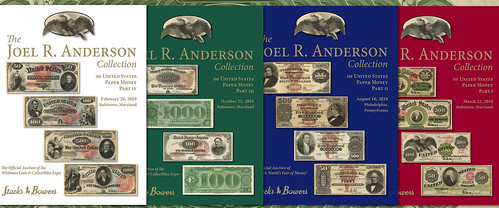
The Stack's Bowers Galleries February 28 offering of Part IV of the Joel R. Anderson Collection of United States Paper Money in Baltimore, achieved nearly $8 million. Online bidders competed with those in the room for 54 lots in this final offering, bringing the total prices realized for the Joel R. Anderson Collection to $34,126,980, and making it the most valuable United States paper money cabinet ever sold at auction. Three notes crossed the million-dollar mark and nearly a quarter of the lots exceeded $100,000.
Presented in the sale was a set of 1869 Rainbow Notes spanning all denominations from the $1 to the $1000. Sold as individual lots, these nine pieces realized a total of over $3.6 million, with the $500 and $1000 -- the only examples in private hands -- each bringing $1.44 million.
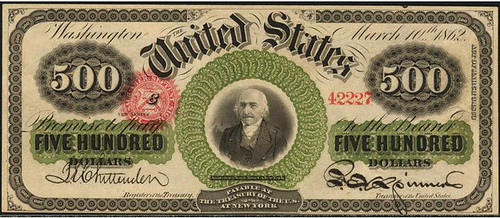
1863 $500 Legal Tender Note
Among Interest Bearing Notes, an extraordinary 1863 Fr. 199 $100 in lot 4019 exceeded high estimate, selling for $204,000. A pair of 1864-dated Interest Bearing notes offered in lots 4022 and 4023 also passed the $100,000 threshold. The Fr. 212 $50 note, with a pedigree to Barney Bluestone's 1944 sale of the Albert A. Grinnell Collection, realized $132,000. The Fr. 212a $100 note, the finest graded of only four known, brought $156,000.
The Silver Certificates offered in Part IV of the Anderson Collection culminated in the highest priced note of the evening, the only privately held example of the 1891 $1000 "Marcy Note" (lot 4037). In this note's first-ever offering at public auction, it brought $1,920,000. Other Silver Certificate highlights included the finest graded Fr. 291 $10 "Tombstone" note that sold for $45,600 (lot 4029), an About New Fr. 328 $50 that realized $132,000 (lot 4033), and a Fr. 341 "Black Back" $100 that brought $168,000 (lot 4035).
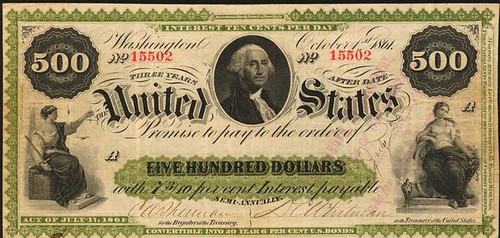
1861 $500 Interest Bearing Note
Gold Certificates in Part IV of the Joel R. Anderson Collection were highlighted by the finest known Fr. 1166b 1863 $20 that sold for $396,000 (lot 4042). Closing out the sale were National Bank Notes, including a Serial Number 1, $10 1902 Red Seal from the First National Bank of Gary, Indiana that realized well over high estimate at $10,800 (lot 4048).
To read the complete article, see:
Stack's Bowers Galleries' Joel. R. Anderson Collection Part IV Auction Realizes
Nearly $8 Million for 54 Lots in Whitman Spring Expo Auction Series of Four Anderson Sales Realizes Total of $34,126,980
(https://www.stacksbowers.com/News/Pages/Blogs.aspx?ArticleID=3304)
To read earlier E-Sylum articles, see:
JOEL R. ANDERSON COLLECTION PART I HIGHLIGHTS
(https://www.coinbooks.org/v21/esylum_v21n13a28.html)
BARRON'S ARTICLE HIGHLIGHTS ANDERSON PAPER MONEY
(https://www.coinbooks.org/v21/esylum_v21n12a33.html)

THE HAITIAN DOLLAR DOESN'T EXIST
Economist JP Koning recently blogged about the Haitian dollar, a nonexistent abstract unit of account. Here's an excerpt. See the complete article online for more. -Editor
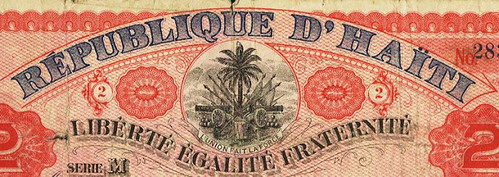
Haiti is home to a strange monetary phenomenon. Shopkeepers and merchants set prices in the Haitian dollar, but there is no actual thing as the Haitian dollar.
I've written before about an exotic type of unit-of-account known as an abstract unit of account. A nation's unit of account is the symbol used by its citizens and businesses to advertise and record prices. Here in Canada we use the $ while in a country like Japan people use the ¥. The national unit of account almost always corresponds to the national medium-of-exchange. In both Canada and Japan, the $ and the ¥ amounts advertised in shop aisles are embodied by physical dollar and yen banknotes and coins.
Abstract units of account, on the other hand, don't correspond to anything that exists. In the UK, for instance, race horse auctions are priced in guineas, a gold coin that hasn't been minted in over two centuries. The guinea is a ghost money, an accounting unit that according to John Munro is "calculated according to the precious metal content of some famous, once highly favoured coin of the past than no longer circulates."
Other examples of abstract units of account include include Chile's Unidad de Fomento, or UF, and Angolan macutes.
Like the guinea, the Haitian dollar is an abstract unit of account. I should warn you that I've never been to Haiti--all of this comes from what I've read in tourist guides, newspapers, Haitian blogs, and an academic paper on the topic from Federico Neiburg. But from what I understand, it is quite common for prices in Haiti to be set in a unit referred to as the 'Haitian dollar.' However, there is no corresponding Haitian dollar banknotes or coins. The U.S. dollar and the Haitian gourde, a currency managed by Haiti's central bank, circulate in Haiti and are used to consummate all payments. But the Haitian gourde is not the same as the Haitian dollar.
How does this work in practice? Say that a restaurant is selling sandwiches for fifteen Haitian dollars. Paying with Haitian dollars is impossible--they don't exist--so some other route must be taken to complete the deal. Haitians have spontaneously adopted a rule of thumb that the Haitian dollar is equal to five Haitian gourdes. So to pay for the sandwich, it will be necessary to hand over 75 gourdes (H$15 x 5$H/HG).
A certain degree of mental gymnastics is thus required of Haitians, since sticker prices must always be multiplied by five (to arrive at the gourde amount) and banknotes held in a wallet divided by five (to arrive at the Haitian dollar amount). For foreigners, this can be confusing, but for Haitians the motley of U.S. dollars, gourdes, and the Haitian dollar unit of account has become second nature.
So how did this system come about? Glad you asked... -Editor
Where does the practice of using the Haitian dollar come from? I wasn't aware of this, but during WWI the U.S. invaded Haiti, occupying it till 1934. There was a strong German mercantile presence in Haiti and apparently the U.S. authorities feared that Germany might take over.
By 1918 the government's gourdes had become "so worn and torn" that a shortage of banknotes arose. As part of a 1919 U.S.-initiated monetary reform, all previous issues of gourdes were to be replaced by a new issue by the Banque Nationale de la Republique d'Haiti, which by then was owned and controlled by New York-based City Bank (and would eventually become Citigroup). The BNRH was granted a monopoly on banknote issuance, which meant that the Haitian government could no longer print its own currency.
The new banknotes were to be convertible into U.S. dollars at a rate of five gourdes to the dollar, a promise that the BNRH printed on the face of each bill, as the images below illustrate.
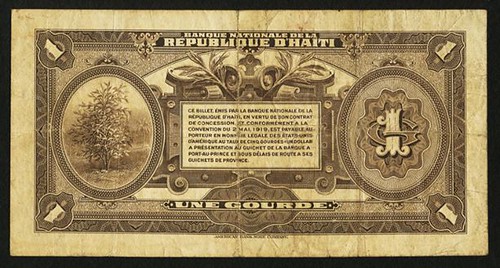
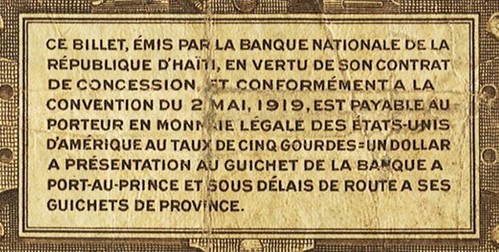
"This bill issued by the National Bank of the Republic of Haiti, under its concession contract and conforming with the agreement of May 2, 1919, is payable to the holder in legal money of the United States at the rate of five gourdes to the dollar upon presentation to the bank's office in Port-au-Prince or, after a delay, at its provincial branches."
I hadn't noticed this January 29, 2019 post. Found via the February 26, 2019 issue of News & Notes from the Society of Paper Money Collectors. -Editor
To read the complete article, see:
The Haitian dollar
(http://jpkoning.blogspot.com/2019/01/the-haitian-dollar.html)

ZIMBABWE INTRODUCES A NEW CURRENCY
Howard Berlin forwarded this Forbes article on the latest Zimbabwe currency gyration. Thanks. -Editor
Until February 20th, Zimbabwe produced a quasi-currency. It was dubbed a "Zollar." On the 20th, the quasi-currency became Zimbabwe's official currency. This new currency is called RTGS dollars and consists of bond notes and RTGS (electronic money).
The RTGS dollars possess legal tender status and will serve as the unit of account for the government's books. The official exchange rate for Zollar quasi-currency had been set at a one-to-one rate with the U.S. dollar. But now, the RTGS dollar will trade at a managed floating exchange rate. The rate today is 2.50 per U.S. dollar, not par, as it used to be. So, Zimbabwe's official exchange rate has experienced a maxi-devaluation of 60%.
That, however, is not the end of Zimbabwe's exchange-rate story. Zimbabwe imposes a plethora of exchange and capital controls on its citizens. Under these exchange controls, private individuals, traders, and companies must seek permission from the government to buy, sell, and hold foreign currencies. So, neither the old Zollar nor the new RTGS dollar is freely convertible into a foreign currency. In consequence, a black-market (read: free market) exists. Indeed, whenever there are exchange controls and restrictions on free convertibility, black markets always appear. At present, the black-market rate is 5.75, which represents a considerable premium over the official rate of 2.50 RTGS$/USD.
The black-market usually yields a premium over the official rate, as it does Zimbabwe. In some cases, the premiums can reach staggering levels. For example, in 1982, Ghana's cedi carried a premium of over 2,000%. These premiums are known as black-market premiums.
The pedigree of exchange controls can be traced back to Plato, the father of statism. Inspired by Lycurgus of Sparta, Plato embraced the idea of an inconvertible currency as a means to preserve the autonomy of the state from outside interference.
So, the temptation to turn to exchange controls in the face of disruptions caused by hot money flows is hardly new. In the modern era, Tsar Nicholas II was the first to pioneer limitations on convertibility. In 1905, he ordered the State Bank of Russia to introduce a limited form of exchange control to discourage speculative purchases of foreign exchange. The bank did so by refusing to sell foreign exchange, except where it could be shown that it was required to buy imported goods. Otherwise, foreign exchange was limited to 50,000 German marks per person. The Tsar's rationale for exchange controls was that of limiting hot money flows, so that foreign reserves and the exchange rate could be maintained.
If Zimbabwe wants to be open for business and wants its own sound currency, it should adopt a currency board. That would make Zimbabwe's currency a clone of the U.S. dollar, or some other suitable anchor, such as gold. A currency board would mandate that exchange controls be thrown in the dustbin. Free convertibility would reign, and so would low inflation rates and higher asset valuations. The "open for business" sign would be the real deal.
To read the complete article, see:
Zimbabwe Introduces A New
Currency And A Maxi-Devaluation
(https://www.forbes.com/sites/stevehanke/2019/02/22/zimbabwe-introduces-a-new-currency-and-maxi-devaluation/#52ae49097e05)
THE BOOK BAZARRE
THE RISE OF THE 100 DOLLAR BILL
Pablo Hoffman writes:
Kiss Ben goodbye? A CNBC chart of Federal Reserve data shows that the number of C-notes in circulation has quadrupled over twenty years from 1997 to 2017. There are now more 100s than one-dollar bills out there.
There are calls to eliminate the 100-dollar bill to fight corruption. But then how will I light my cigars?
I don't believe Pablo - he doesn't smoke cigars. But thanks for the article. Interesting statistic. -Editor

The amount of $100 bills in circulation is surging. And it's leaving some economists scratching their heads.
The number of outstanding U.S. $100 bills has doubled since the financial crisis, with more than 12 billion of them across the world, according to the latest data from the Federal Reserve. C-notes have passed $1 bills in circulation, Deutsche Bank chief international economist Torsten Slok said in a note to clients this week.
To read the complete article, see:
There's been
a mysterious surge in $100 bills in circulation, possibly linked to global corruption
(https://www.cnbc.com/2019/02/27/theres-been-a-mysterious-surge-in-100-bills-in-circulation-possibly-linked-to-global-corruption.html)
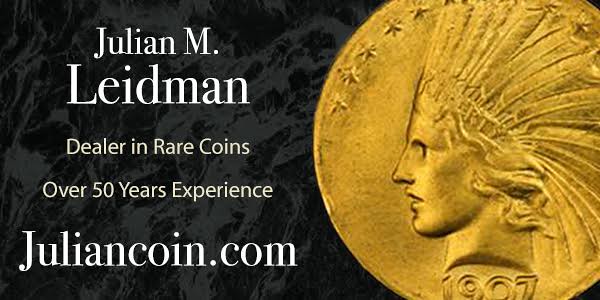
LOOSE CHANGE: MARCH 3, 2019
Here are some additional items I came across in the media this week that may be of interest. -Editor
Video: The UK's First Vertical Bank Note
This video published February 27, 2019 by The Telegraph shows people's reactions to the new vertical banknote from the Ulster Bank. -Editor
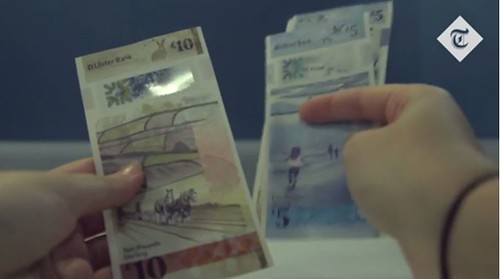
The UK's first vertically printed banknote became legal currency today, and it's described as the "biggest shake-up to consumer cash wallets in over 40 years".
Northern Ireland's Ulster Bank is one of seven in the UK that can issue sterling as legal currency. It switched production of its £5 and £10 notes to polymer, making them more secure and durable, but it also printed them with a vertical design.
Armed with the new notes I took to the streets of London to find out what shoppers and small business owners thought of the strange looking cash.
To read the complete article, see:
'Monopoly money': testing out the UK's
first vertical bank note (https://www.telegraph.co.uk/money/consumer-affairs/monopoly-money-testing-uks-first-vertical-bank-note/)


